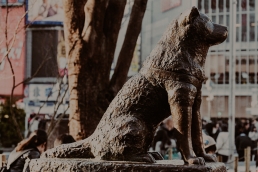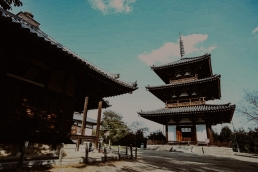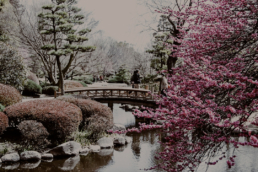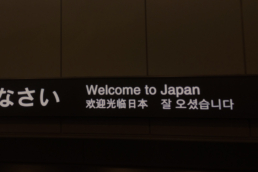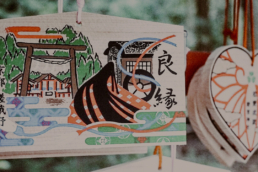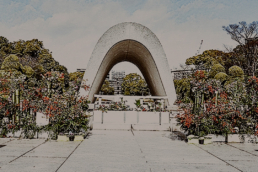Yamanote Line: 10 segreti e curiosità da scoprire
Yamanote Line: Ieri e oggi, un destino imprescindibile
Si lo so, quando si parla di storia qualcuno potrebbe storcere il naso e pensare che sarà noioso quello che stiamo per dire, ma abbiate fiducia in noi e continuate a leggere…
La Yamanote Line di Tokyo è una delle linee ferroviarie più importanti e trafficate della città.
Fu aperta nel 1885 dalla società ferroviaria privata Nippon Railway Company. Originariamente, la linea faceva il giro intorno al centro di Tokyo, collegando le principali stazioni ferroviarie della città ed era conosciuta anche come “La via della seta”. Nel corso degli anni, la linea subì diverse estensioni e modifiche per soddisfare la crescente domanda di trasporto nella capitale giapponese diventando un pilastro del trasporto pubblico di Tokyo, giocando un ruolo vitale nel collegare le diverse aree della metropoli.
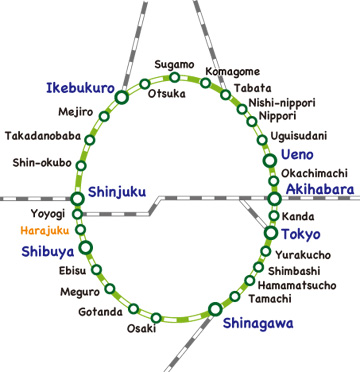
Photo Credits: https://www.gov-online.go.jp/
Oggi, la Yamanote Line è gestita dalla East Japan Railway Company (JR East) e continua a essere una delle linee ferroviarie più affollate del mondo, trasportando milioni di passeggeri ogni giorno attraverso i quartieri più importanti di Tokyo, come Shibuya, Shinjuku, Ikebukuro e Ueno. La Yamanote Line è diventata un'icona della vita quotidiana a Tokyo e uno dei simboli del sistema ferroviario giapponese altamente efficiente e affidabile.
Yamanote Line: Segreti e Curiosità
Grazie alla Yamanote Line è possibile raggiungere 30 quartieri di Tokyo ed è un vero e proprio tesoro di segreti e curiosità! Saliamo a bordo e scopriamo insieme 10 tappe imperdibili!
 Photo Credits: flickr.com
Photo Credits: flickr.com
1 - Shin-Okubo
Questa stazione è nota come la "piccola Corea" di Tokyo, con una vasta gamma di negozi, ristoranti e caffè che offrono cibo e cultura coreana.
2 - Meguro River Cherry Blossoms
Durante la stagione dei fiori di ciliegio, il tratto del fiume Meguro vicino all’omonima stazione si trasforma in un paradiso di petali rosa.
3 - Nishi-Nippori Yanaka Ginza
Questa piccola via commerciale vicino a Nishi-Nippori è un'oasi di negozi tradizionali e ristoranti rustici che offrono una prospettiva autentica della vita quotidiana a Tokyo.
4 - Sugamo
Conosciuto come il "Harajuku per anziani", Sugamo è popolare tra gli anziani per i suoi negozi che vendono prodotti tradizionali giapponesi e per il tempio Koganji, famoso per la sua pietra della fortuna rossa.
5 - Yūrakuchō Gado-shita
Sotto le tracce della Yamanote a Yūrakuchō si trova un labirinto di piccoli bar e ristoranti chiamato "Gado-shita", che offre un'atmosfera unica e vivace.
6 - Akihabara
Nota come la mecca della cultura otaku, Akihabara è piena di negozi di anime, manga, elettronica e caffè a tema.
7 - Komagome
Questo quartiere è famoso per il giardino Rikugien, uno dei più belli di Tokyo, che offre paesaggi incantevoli in ogni stagione.
8 - Shibuya Crossing View from Starbucks
Mentre Shibuya Crossing è un punto caldo per i turisti, pochi sanno che il Starbucks vicino alla stazione offre una vista panoramica perfetta per osservare il caos urbano di Tokyo dall'alto.
9 - Iidabashi e Koishikawa Korakuen
Questa stazione è vicina al bellissimo giardino giapponese di Koishikawa Korakuen, un'oasi di tranquillità nel cuore di Tokyo.
10 - Meiji Shrine Gyoen
Non lontano dalla stazione di Harajuku, il vasto parco intorno al Santuario Meiji è un luogo ideale per una passeggiata rilassante lontano dal trambusto della città.
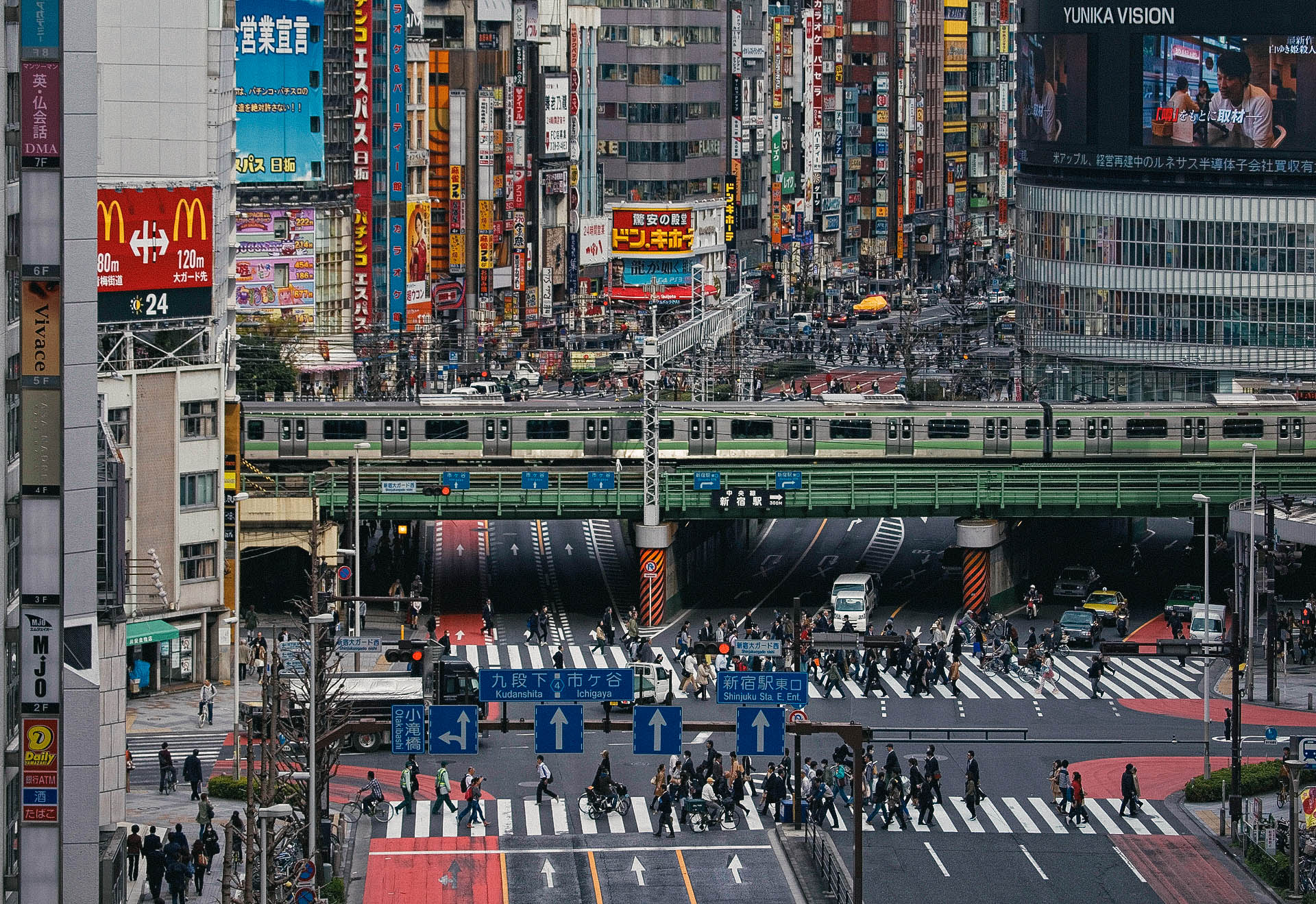 Photo Credits: flickr.com
Photo Credits: flickr.com
Che dite, saliamo a bordo della prossima fermata e andiamo insieme alla scoperta di nuovi luoghi?
Ten things you don't know about Hachiko
Everyone, but really everyone, knows the story of the faithful Hachiko, the dog that in the 30's moved the hearts of the whole world for his deep fidelity, but not everyone knows some details about this sweet dog whose symbolic statue stands in Shibuya.
10 things you don't know about Hachiko
Author: Sara

photo credits: lastampa.it
1- The Origins
The beautiful Akita-inu was born in 1923 in Odate in Akita Prefecture (hence the breed name, "Akita dog") and was purchased by the scientist Hidesaburo Ueno who named him Hachi, "8". Right in Odate, in front of the station, there is another statue of Hachi a shrine and the Akitainu Hozonkai Museum.

photo credits: keblog.it
2- Love overcomes evil
.
When Ueno died in 1925, Hachi found a new home with the scientist's former gardener, Kikuzaburo Kobayashi in Tomigaya, not far from Shibuya. Every day the faithful dog went to Shibuya station to wait for the return of Ueno, but for 10 years this "walk" was not always quiet: Hachiko was mistreated and beaten several times by pedestrians, children and people without any humanity. Shameful, isn't it?

photo credits: greenme.it
3- Hachi becomes Hachiko
.
In 1932, the president of the Nihon Ken Hozonkai, an association for the preservation of Japanese dogs, Hirokichi Saito, learned of Hachi's history and wrote an article recounting the vicissitudes and mistreatment suffered by this faithful dog, transforming it in a short time into a symbol. It was at this point that the suffix "ko" was added to Hachi's name to show respect for his devotion and loyalty.

photo credits: hotcorn.com
4- The Honorary Statue
Teru Ando, Saito's acquaintance, sculpted the famous Hachiko statue (while the dog was still alive!) which was unveiled in 1934. Before this happened several swindlers tried to get money out of him claiming to be the creators of the statue! There is really no limit to human greed...

photo credits: japantravel.com
5- The Merger of the Statues
.
World War II spared nothing, not even the Hachiko statues. The metal with which they were made had to be used "for the good of the war" and so they were melted down.
At the end of the Pacific War Ando's son, Takeshi, built the current statue in Shibuya. The one at Odate Station was also rebuilt in 1967.
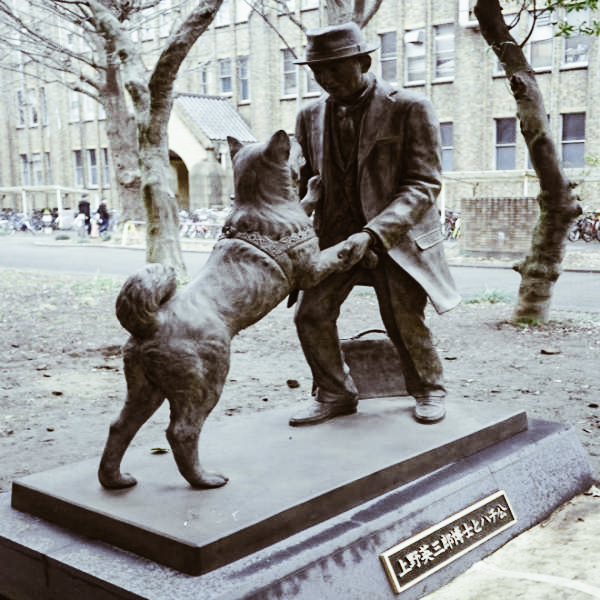
photo credits: animalpedia.it
6- Hachiko and Ueno forever together
.
So far we have always talked about the statues dedicated to the puppy, but there is another, beautiful one that brings together Hachiko and his master. It was built 80 years after Hachiko's death, when the University of Tokyo decided to pay tribute to the two protagonists of the sad story. Thanks to donations from individuals and companies, over 10 million yen made the reunion between the dog and his master possible. Today the statue stands on the campus of the University of Tokyo, right next to Ueno Park.
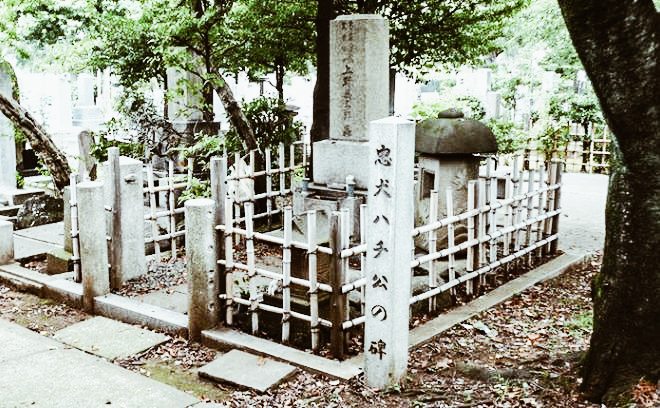
photo credits: womanuntamed.com
7- A Cemetery Full of Charm
I guess I'm one of the few people who like to visit cemeteries, and the Aoyama Cemetery, dating back to 1872, is definitely one of the most beautiful: near the Gaienmae and Aoyama Itchome stations, it stretches out like a huge park and is home to many famous people whose tombstones rise up to reveal a unique architecture. Of course Ueno lies right here and next to his grave there is a monument erected immediately after the death of Hachiko in 1935.

photo credits: wikimedia.org
8- Between the macabre and science
.
I would almost call this point disgusting, but if you have the courage (and the stomach) of iron then know that it is possible to observe the internal organs of Hachiko preserved in sample bottles at the museum of the archives of the Faculty of Agriculture of the University of Tokyo, near Ueno Park. Various autopsies performed between 1935 and 2010 had found infestations of parasitic diseases and, finally, cancer, the real cause of Hachi's death. At the National Museum of Nature and Science there is also a taxidermied Hachiko with the original fur of the dog......

photo credits: timeout.com
9- The Protectors of Tokyo
The statue of samurai Saigo Takamori with his faithful Tsun also stands in Ueno Park. Tsun and Hachiko quickly became a symbol for the Japanese and declared the "protectors of Tokyo and the Japanese economy."

photo credits: ilgiornale.it
10- Richard Gere as Ueno?
.
I'm sure everyone (or almost everyone) has seen the movie "Hachiko - Your Best Friend" (Original title: "Hachi: A Dog's Tale") , but have you stopped to think that this 2009 film is set in the United States? The story is nonetheless heartbreaking and beautiful, but it fails to bring Japanese culture to light in the way that the original 1987 film, "Hachiko Monogatari" does.
Nara, the capital of Buddhism in Japan
Japan, like Italy, has many tourist destinations and among them are the seven temples of Nara, a destination rich in history and culture.
The 7 Temples of Nara, the capital of Buddhism
Autore: Sara

Those who approach the culture of the Rising Sun for the first time are led to believe that Buddhism has always been a strictly Japanese philosophy, also thanks to the numerous temples scattered throughout the country. In reality, few people know that it was a Korean king who "exported" this religion to Japan! It all began when the prefecture of Nara was the center of politics, culture and economy of the country. The Japanese people were purely Shintoist, that is a follower of "Shinto" (神道): a polytheistic religion of animist type that revolves around the existence of many Kami ("gods", "spirits") that are believed to inhabit all things. In 552, King Seond of Baekje, a kingdom in the southwest of the Korean peninsula, brought to the Japanese court a statue of Shakyamuni (historical Buddha) and many satras. The emperor of the time, Kimmei, was attracted and slowly Buddhism established itself as the new state religion.
Nara thus became Nanto Shichi Daiji (南都七大寺), the capital of Buddhist temples built by imperial order, now a world heritage site, and includes:
- Horyuji(法隆寺)
- Houkiji (法起寺)
- Todaiji(東大寺)
- Kofukuji(興福寺)
- Gangoji (元興寺)
- Yakushiji (薬師寺)
- Toshodaiji (唐招提寺)
The Seven Temples of Nara
.
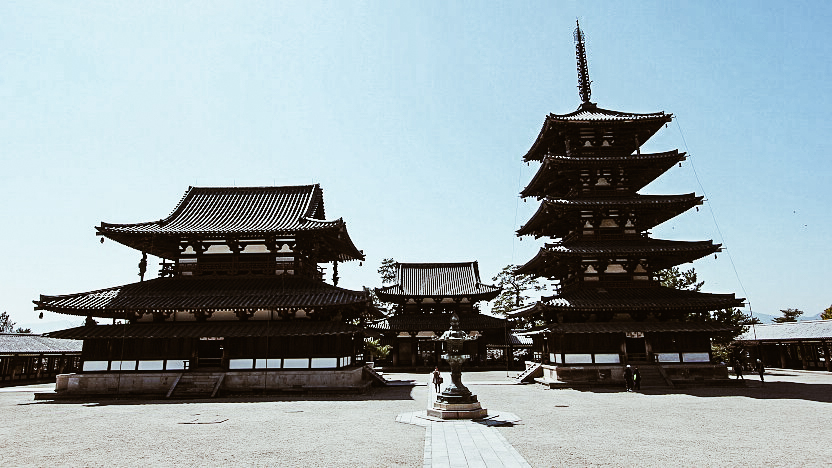
photo credits: https://www.japan-guide.com
Horyuji
Horyuji Temple is the first site to be designated a UNESCO World Heritage Site in Japan. Founded in 607 by Prince Shotoku at the behest of his father, Emperor Yomei, it was rebuilt in 670 following a fire that almost burned it down, and today is considered the cradle of Japanese Buddhism. The area over which the large temple complex stretches can be divided into the west side, Saiin garan (西院伽藍, where the five-story pagoda, golden hall, corridor and internal portal are located) and the east side, Toin garan (東院伽藍, where the octagonal Yumedono (夢殿, the hall of visions) stands.
Official Site: http://www.horyuji.or.jp/assets/images/pdf/english.pdf
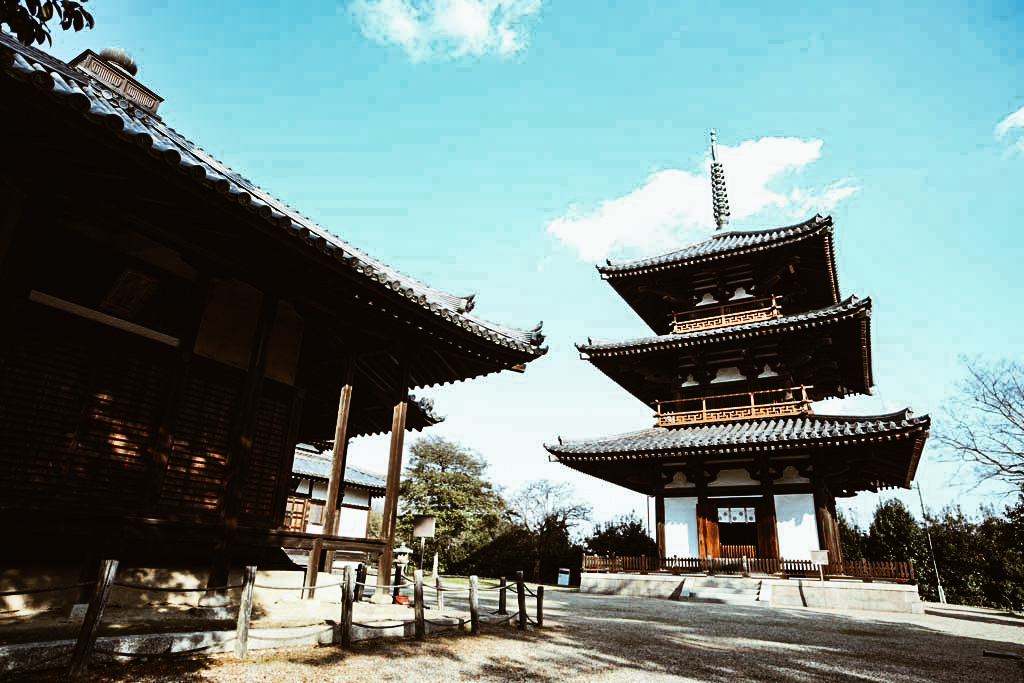
photo credits: masterpiece-of-japanese-culture.com
Houkiji
This temple with multiple identities (it is in fact also known as Okamoto-dera 岡本寺, Okamotoniji 岡本尼寺, Ikejiri-dera 池後寺 and Ikejiriniji 池後尼寺) is located just under 2 km from Horyuji. It was originally the palace of Shotoku Taishi's family, but before his death he ordered his son Yamashirono-ooenoo to rebuild it in the form of a temple. Houkiji consists of a main hall and a 3-story pagoda, about 23 meters high: the largest and oldest of its kind in Japan (it was built in 685). A symbol of this temple is undoubtedly the 11-headed wooden Kannon and the bronze Bosatsu (both gods of compassion).
Official Site: http://www.horyuji.or.jp/assets/images/pdf/english.pdf

photo credits: shoreexcursions.asia
Todaiji
Todaiji was founded by Emperor Shomu in 752, with the sole purpose of housing the statue of the Great Buddha in the Great Hall (Daibutsuden). After 7 long years of construction, the temple was burned down as a result of war in 1180 and continued to suffer the consequences of conflict until 1567. Restored each time, the temple's current form dates back to 1709 and its seated Buddha represents Vairocana and is flanked by two Bodhisattvas. The temple's grounds extend across almost the entire northern part of Nara National Park, so it is not uncommon to come across the famous deer seeking attention!
Official Site: http://www.todaiji.or.jp/english/index.html
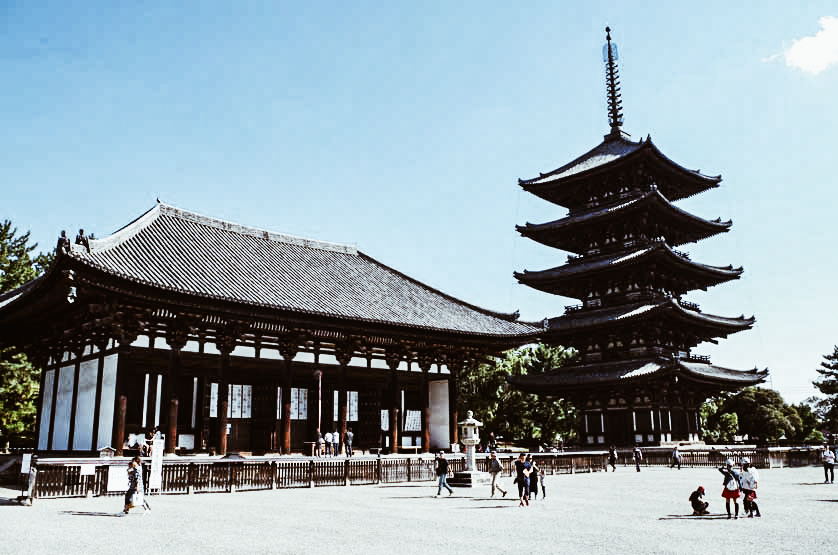
photo credits: japanvisitor.com
Kofukuji
Kofukuji was originally the temple of the powerful Fujiwara clan and one of the main temples of the Hosso (法相宗) sect, one of the six sects of Nanto. The temple consists of several buildings of important historical value and as many as two pagodas: one five-story and one three-story, which unfortunately cannot be visited. To make up for this lack, however, there is the National Treasure Museum where you can admire the statue of Ashura and the bronze head of Buddha.
Official Site: https://www.kohfukuji.com/english.html
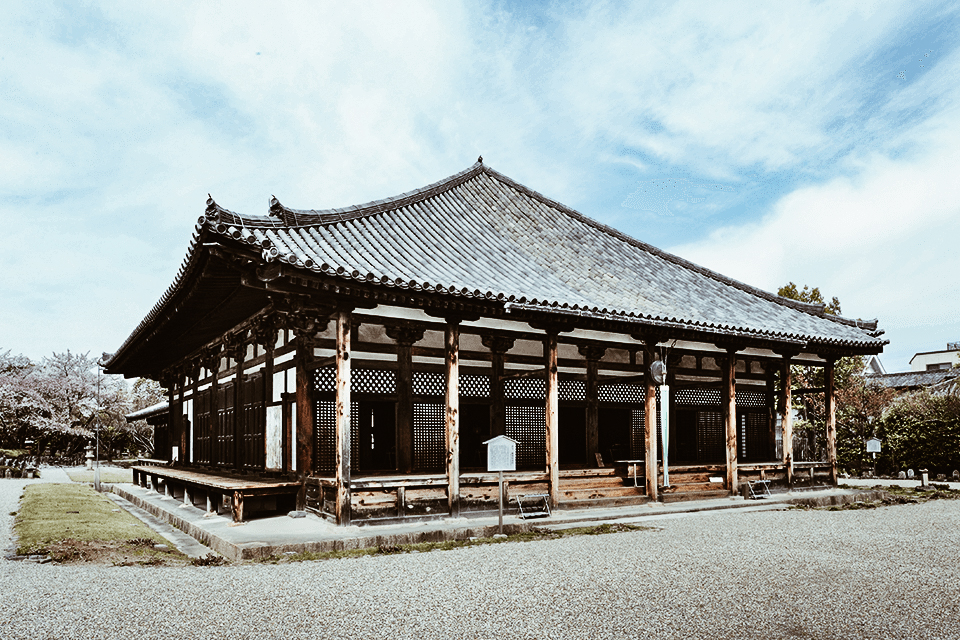
photo credits: kintetsu.co.jp
Gangoji
Founded by Soga no Umako, Gangoji is among the oldest temples in Japan, having been moved from Asuka to Nara in 718. Almost as a gloomy tradition, this temple also suffered the wrath of nature and the devastation of fire and in 1451 almost the entire structure was destroyed and it was no longer possible to recover the ancient splendor of Gangoji except for the Zenshitsu Hall, located at the back, the only original survivor.
Official Site: https://gangoji-tera.or.jp/

photo credits: japan-guide.com/
Yakushiji
Esattamente come Kofukuji, anche Yakushiji è il tempio principale della setta Hosso del buddismo. Fu costruito dall’imperatore Tenmu per sua moglie nel 680. Come ogni tempio, anche questa volta troviamo una grande statua del Buddha: in questo caso Yakushi-Nyorai possiede il potere della guarigione ed è in grado di dare conforto. Inoltre Yakushiji possiede due pagode, una sala dorata ed una collezione di oggetti d'arte buddista, tra cui una Triade Yakushi, un Kannon-Sho e dipinti di grande pregio
Sito Ufficiale: http://www.nara-yakushiji.com/
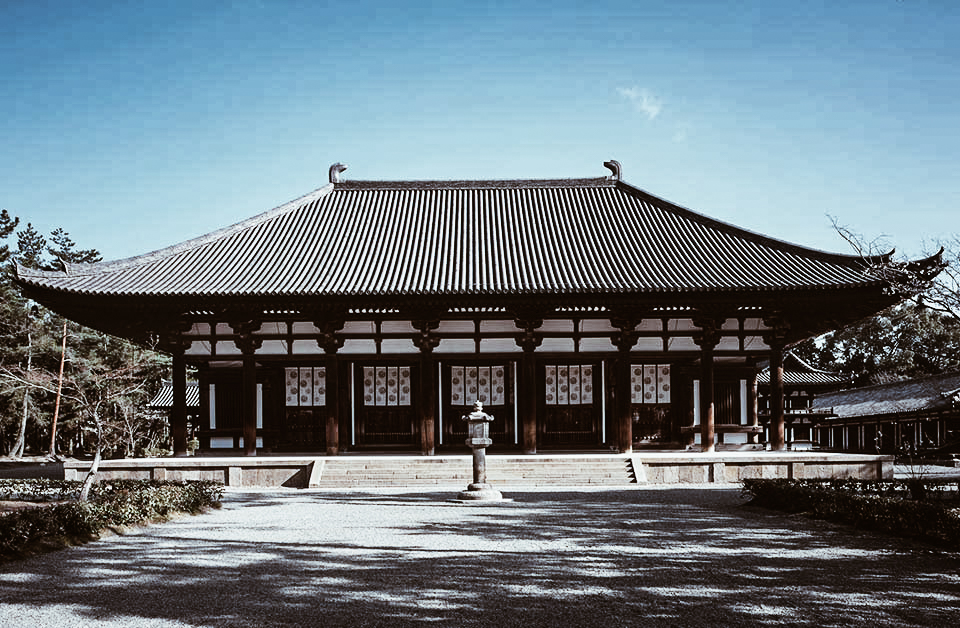
photo credits: toshodaiji.jp/
Toshodaiji
Toshodaiji was the first temple founded in 759 by a Chinese priest, Ganjin, who was sent by the emperor for the purpose of teaching priests and improving Buddhism in Japan. His teachings had a great influence for the country and today it is the main temple of the Rishu (律宗) sect. The main hall, Kondo, contains 9 statues of Buddha!
Official website: https://www.toshodaiji.jp/english/index.html
7 Temples, 7 fascinating wonders dedicated to the care of the soul: although they may seem extremely similar to each other, each building is characterized by unique and precious elements to discover and admire! How about dedicating some of your time to walk around Nara to discover these devout places? Have you already been there? Let us know your impressions and emotions!
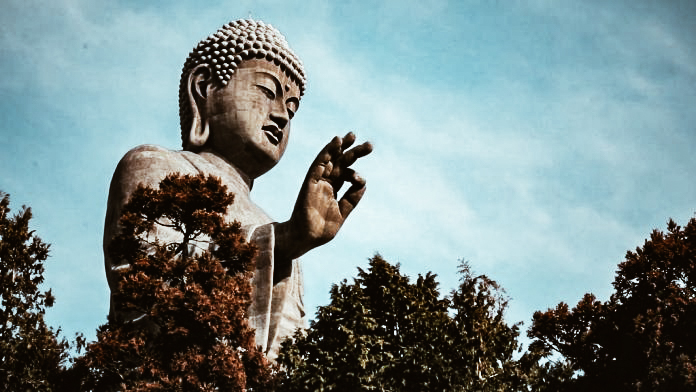
photo credits: thejapanesedreams.com
The wonderful gardens of Japan
With Japan Italy Bridge we have already addressed a deep focus on the Imperial Palace and its gardens, but those are not the only gardens of Japan. Today we will talk about the most beautiful green spaces of the Rising Sun.
Gardens of Japan, the green in the midst of modernity
Author: Sara

photo credits: giardiniepiscine.it
Every country in the world, no matter how evolved, technological and chaotic it is, always hides an oasis of extraordinary peace, a place where the hand of man has not destroyed, but rather takes care of natural beauties of indescribable charm. We are not talking about natural parks this time, but about smaller green spaces such as gardens. Green spaces that arise in unexpected places and that give the mind and soul a break from all that is skyscraper landscapes and cars that, again, Japan knows how to give us with its usual elegance and unique spiritual touch.
The trip we are proposing today will make you relax, so how about making yourself comfortable, preparing a delicious herbal tea and follow us?
Kenrokuen
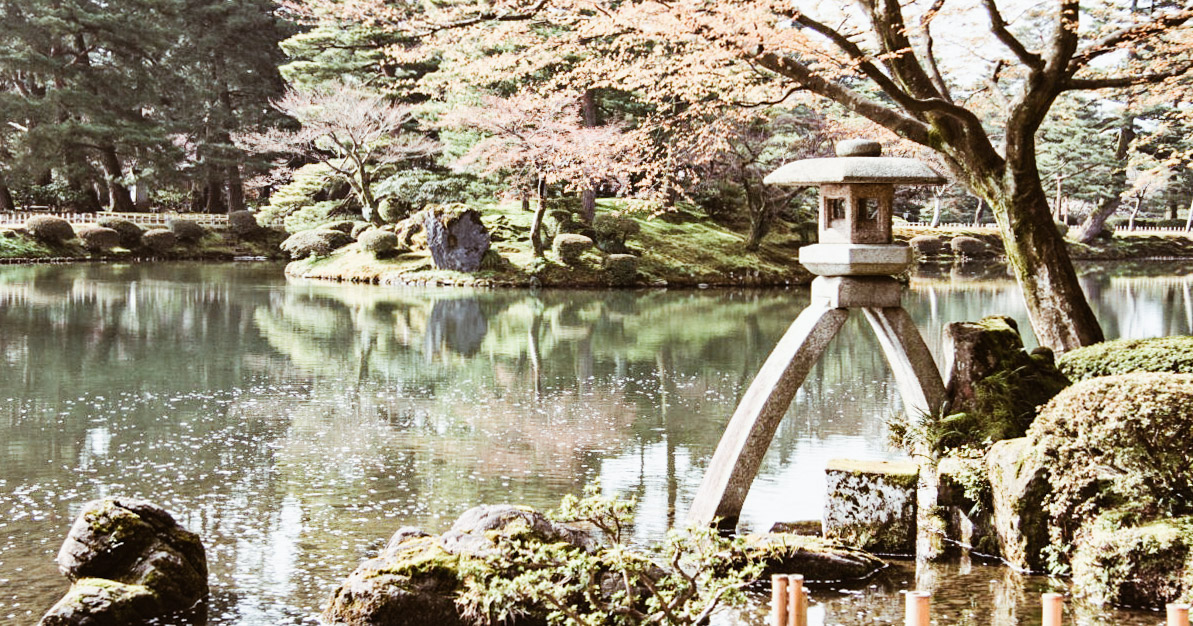
photo credits: japantravel.com
The first of our stops is Kanazawa where there is the Kenrokuen which covers an area of 11.4 hectares and is considered one of the most beautiful gardens of the Rising Sun. Kept luxuriant from generation to generation by the Maeda family since the feudal period, in Japanese the name Kenrokuen means "garden of 6 attributes" because in it are enclosed the 6 characteristics of the perfect garden: space, tranquility, artifice, antiquity, waterways and landscapes.
Official Web Site: pref.ishikawa.jp
Korakuen
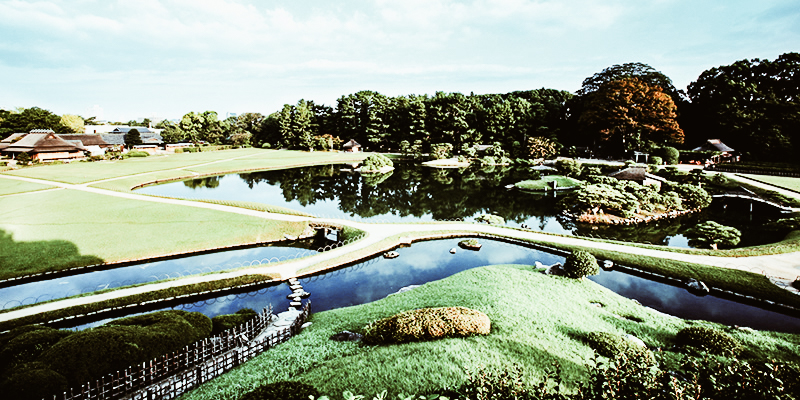
photo credits: okayama-kanko.net
The second stop takes us to Okayama, where the magnificent Korakuen stands: built in 1687 exclusively as a place of entertainment for the ruling family, it was opened to the public in 1884, when it became property of Okayama prefecture. It encloses forests, tea and rice fields, a spectacular pond and many small streams.
Official Web Site: okayama-korakuen.jp
Kairakuen
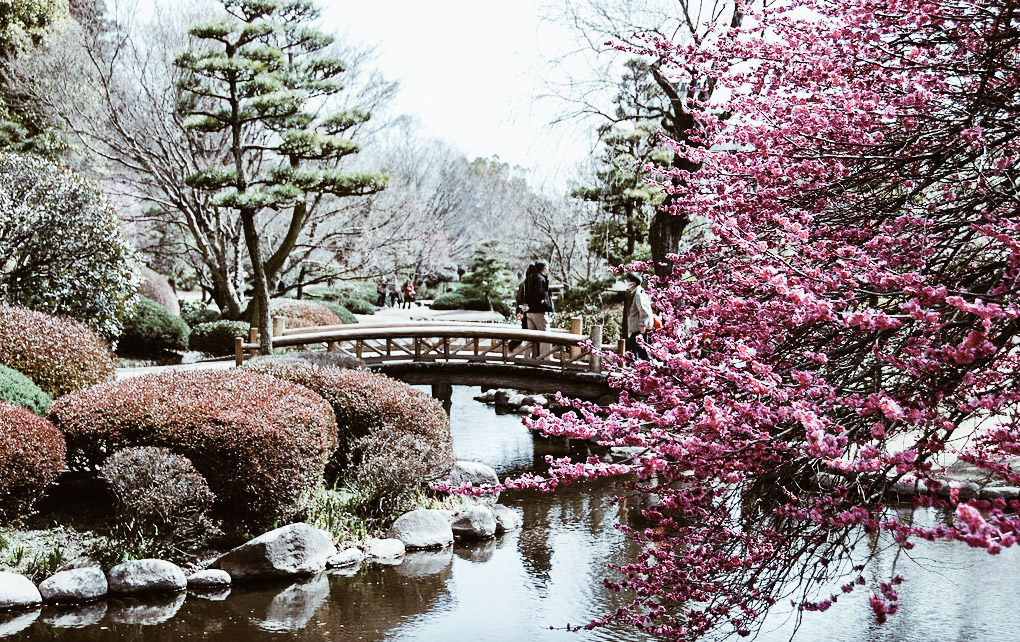
photo credits: flickr.com
We have come to the third of the most beautiful landscape gardens in Japan, we are in Mito, the capital of Ibaraki Prefecture and here Kairakuen has always been a place accessible to all, not only for the local lord Tokugawa Nariaki who had it built in 1841. This beautiful green space has become famous thanks to the Mito Ume Matsuri, the festival of plum blossoms, held between February and March: a spectacle of timeless charm.
Official Web Site: ibaraki-kairakuen.jp
Kokedera

photo credits: saihoji-kokedera.com
Our fourth visit will be to Kyoto, to the garden that is home to 120 different types of moss! It is the Kokedera or Saihoji Temple, originally part of a royal villa it became a temple almost 1000 years ago and today is considered a UNESCO World Heritage Site. Visiting this place also offers a unique opportunity, as before being allowed access, visitors must participate in kito (chanting) and shakyo (the copying of Buddhist scriptures).
Official Web Site: saihoji-kokedera.com
Shinjuku Gyoen
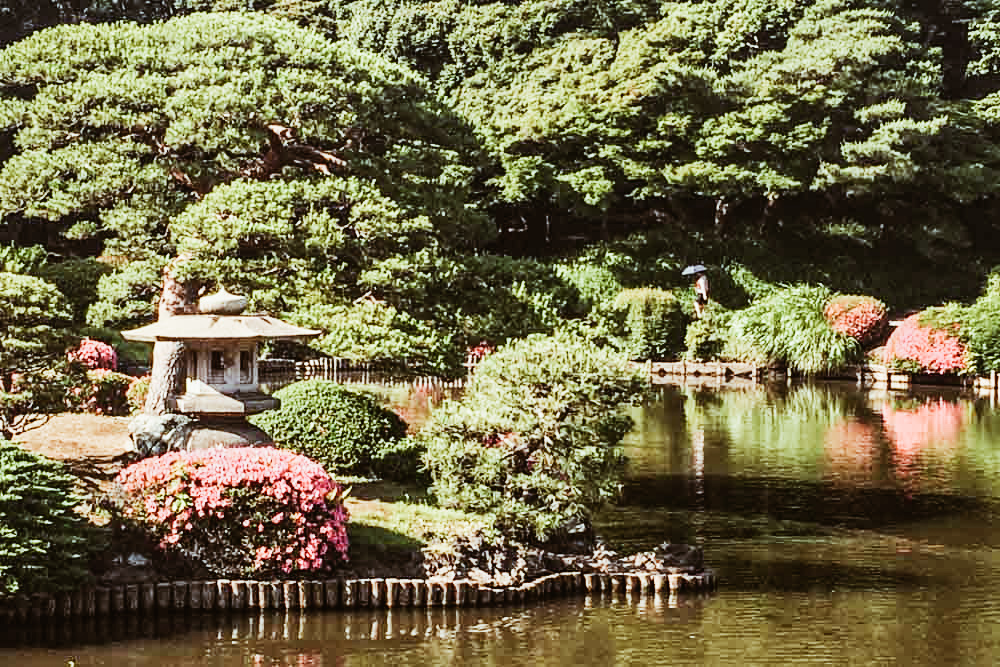
photo credits: www.japanistry.com
For our fifth stop, we fly straight into beautiful Tokyo where we can come across the Shinjuku Gyoen National Garden, one of the most striking national parks in the country. Built in the Edo period as a private residence of the feudal lord Kiyonari Naito, it became open to the public in 1949. Inside you can immerse yourself in various gardens, first of all the oldest one in Japan full of lakes, islets, bridges and pavilions. Then you can get lost in the magnificent rose garden of the French-style garden and, last but not least, enter the English-style garden with its wide green lawns lined with beautiful cherry trees: here Hanami acquires an indescribable magic!
Official Web Site: env.go.jp
Imperial Palace East Gardens
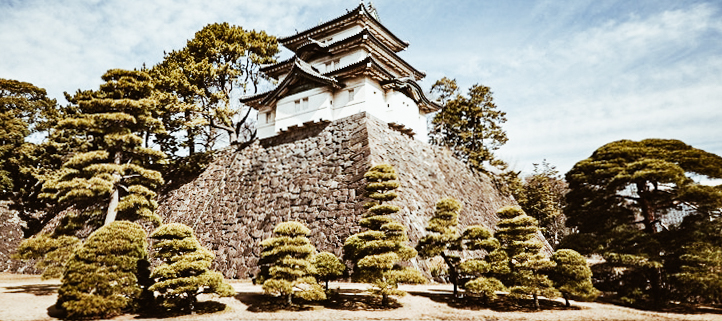
photo credits: enjoy.vivi.city
We conclude our nature trail by staying in Tokyo. Over 210,000 square meters where, once upon a time, stood the walls of Edo Castle, residence of the Tokugawa shogun who ruled Japan from 1603 to 1867. At the foot of the hill, exactly where the defensive walls once stood, lies this marvellous garden in which the Ninomaru pond is home to some rather rare aquatic plants and is covered with Nuphar Japonicum, yellow water lilies.
Official Web Site: https://www.kunaicho.go.jp
Japan, the preferred destination for people wanting to move abroad
Its timeless charm, the opportunities it offers, the hustle and bustle of its cities and the sheer size of its cities make Japan the preferred destination for all those who decide to move abroad to live and work.
Japan, the preferred destination for people wanting to move abroad
Author: Sara
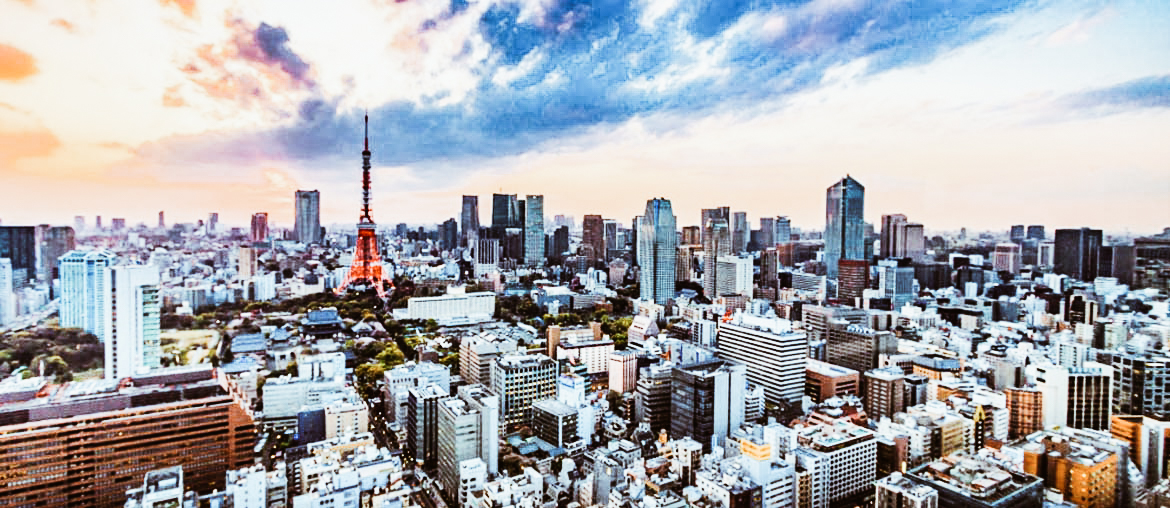
photo credits: tokeet.com
According to a global survey, Tokyo stands out among the top 5 cities in the world chosen to embark on a new life experience. Working in Japan seems to have become the aspiration of many, according to a recent ranking by Remitly, a British company that offers a global digital money transfer service to help all immigrants around the world who make great sacrifices to live and work in another country, the number of those who choose the Rising Sun as a destination to change their lives is surprisingly high, even in this time of pandemic.
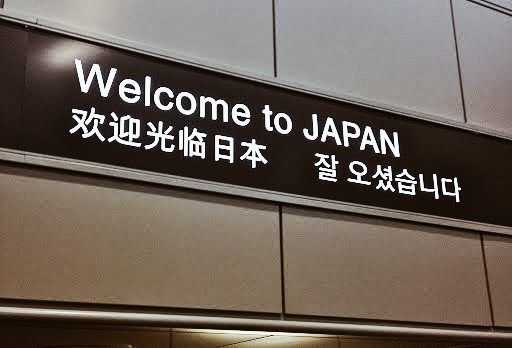
photo credits: travelwithvik.com
Online searches speak for themselves: Japan is the second most popular country in the world to which everyone wants to move after Canada! Most of the data comes from specific countries such as the USA, Australia, Thailand, Laos, Myanmar, Indonesia, Cambodia and the Philippines.
The desire to change one's life by looking to the Land of the Samurai as a destination is also increased by the high degree of safety, beauty and culture. The Japanese response to the pandemic, its rigorous conduct in establishing a state of emergency and avoiding panic and misinformation to the population, has only increased the desire to make the big move and 'try one's luck' in one of the magnificent regions of this immense island.

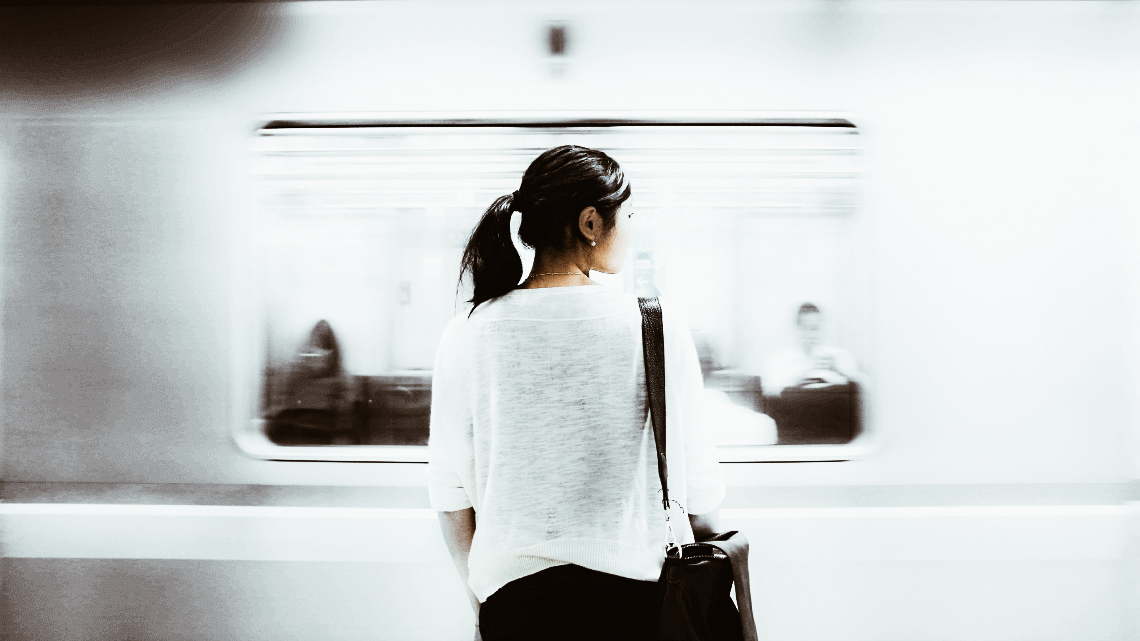
photo credits: transferwise.com, boutiquejapan.com
What do you think? Would you take the "big leap"? Is Japan the chosen destination for you too, or are there other countries you are aiming at? Let us know! And anyway, we wish you to realise all your dreams as soon as possible, 頑張ってください!
Ema tablets and the temples of Japan
The Japan Italy Bridge column continues to promote in-depth studies related to the world of Japan, today we talk about the Ema Tablets that we find in all the temples of Japan.
Raise your hand if you've never seen these curious wooden plates in an anime. Perhaps in a Shinto shrine, with a miko - the priestess dressed in red and white - going about her business. In any case, whether you've seen them before or not, today you can find out more.
Ema 絵馬 Japanese wooden votive tablets
Guest Author: Flavia
Translated as 'Horse Representation', Ema's are flat plaques designed to transcribe wishes and fears to be addressed to gods/spirits (kami) and buddhas. In other words, they represent a way for people to write a little message to the spiritual world. Formerly made of clay, they later began to be made of wood. Once a prayer has been written, the Ema is hung in a dedicated space at Shinto shrines as well as Buddhist temples. It is in fact a custom of Shinto origin that later spread to temples. Since they are all displayed together 'publicly', anyone can of course take a peek at them (it is important that the kami do the same).
However, it is also possible to keep them for oneself, as an heirloom. The great variety of representations, colours and styles that characterise them has always attracted the curiosity of folklorists. Together with the inscriptions on them, they represent a veritable prism through which a wide range of life stories are presented to us. A cross-section of spirituality that can show us the different colours of Japanese reality.
Ema are not the only religious objects designed to 'operate' in this sense, but they are perhaps the most widespread and can be found just about everywhere. The fact that they can be left in place distinguishes them from other religious objects such as Fuda (札) and O-Mamori (お守り). With an average width of 15 cm and a height of 9 cm, they can be very varied in size, shape and colour.
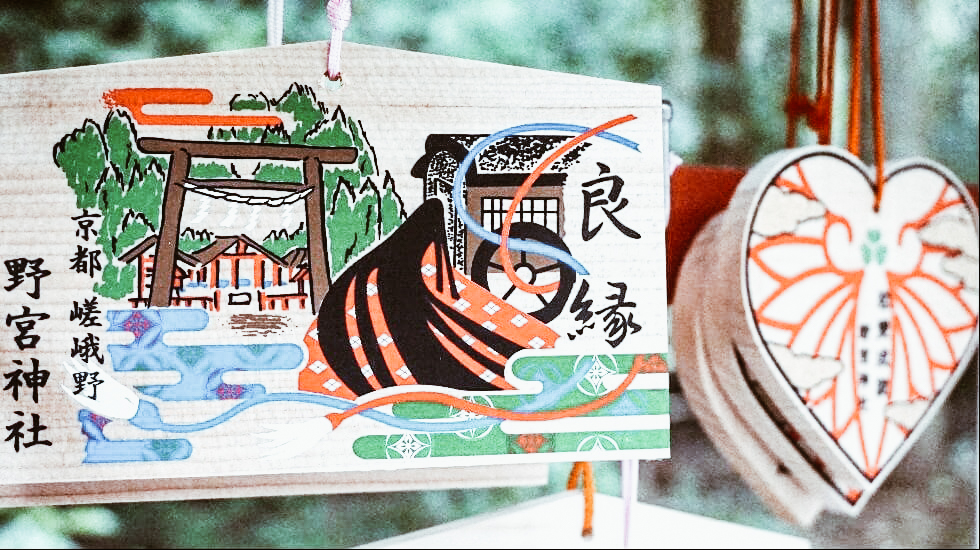
photo credits: sharing-kyoto.com/
The themes depicted can range from the following:
-
- the kami/buddha to whom the shrine or temple is dedicated (there may even be tablets depicting Thomas Edison!)
.
- the specific benefits that kami (spirits/goddesses) and buddhas are empowered to bestow;
- scenes on the origin and history of the place of worship;
- religious or cultural objects, such as zodiac animals of Chinese origin (some shrines are specifically dedicated to an animal-sign of the zodiac)
.
However, traditionally, particular importance is given to the representation of the horse, as suggested by the etymology of the name itself: e (絵) "image, drawing", but (馬) "horse".
Why the horse?
Short answer: because in ancient times people used to offer a horse to shrines and temples to obtain blessings and good luck. The figure of the 'sacred horse' still survives to this day, so much so that some religious centres use to keep one. And, if not in the flesh, in the form of a life-size model.
This sacredness of the horse originates from an ancient Shinto belief that saw the horse as an animal dear to the kami and as their messenger (although it is also important in Buddhism). One thing led to another, and so the horse quickly became a symbol carrying messages between the human world and the "other side". Or the Higan (彼岸) as it is also called in the anime/manga Noragami. (Noragami is highly recommended if you are attracted to the 'spiritual' genre, so to speak. Even through the author's fictional interpretation, it gives you a religious insight into Japan, and renders very well the relationship of the Japanese with spirituality).
Anyway, having established that our horse was considered special, the idea was to invoke a 'hand from heaven' in troublesome situations or events. For example, in times of drought they hoped for some rain (black horse) or, if not, for it to stop raining (white horse). However, in ancient times only a few people could afford to give a horse away easily. The majority of people tried to hold on to them as a valuable animal for their livelihood. Moreover, as the academic Ian Reader notes, such offerings could also prove costly for the temples if, at every prayer of some rich lord, they found themselves with a horse each time, which rightly had to be maintained, with the expense that this entailed.
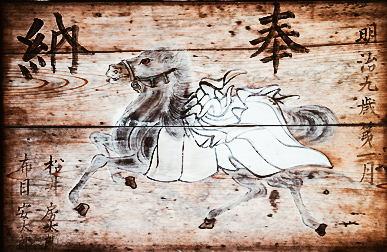
photo credits: japan-photo.de
It was in response to these contingent problems that the idea of depicting the horse began to emerge. Instead of using the animal in the flesh, why not make 'e-ma' ('horse-image') instead? An affordable solution, accessible to all.
Ema thus made their first appearance at the beginning of the 8th century (Nara period), while the first evidence comes to us from the mid-10th century (Heian period). The collection of Chinese poems and prose Honchō Bunsui or Monzui ( 本朝文粋 ) would be the very first work to mention the "ema". Many others would follow, one of which was the Konjaku monogatari (今昔物語).
E-ma: the origins of the tablets
.
Ema are said to have originated as a substitute for the horse in the act of conveying one's prayers to the supreme otherworldly entities. Although some voices have been heard to the contrary of this general line. Another reading of the events would in fact have it that the plates took on the definition "ema", simply because the horse design was more popular than other themes.
This is because the theme of the design changed depending on the request. Let's say that the design of an Ema was that of a horse: the requesting party's wish could concern the welfare of their horse (think of the case of the most humble, for whom such an animal was fundamental). If the wish did not concern a horse but, for example, a physical ailment, the design would depict the painful part of the body; and so on. So "ema" according to this view would not indicate that the tablets were given the same "agency" as the animal. Rather, it simply means that there were a lot of requests concerning horses, from which an extension of the designation would be triggered.
Another interpretation, however, emphasises that the sacredness of the horse is not a purely Shinto invention and that in Buddhism, too, the animal has its own significance. Thus, the origin of the Ema would perhaps be more to be found by looking back at the role of Buddhism, on which Japanese folk traditions draw extensively. In this regard, the scholar Gorai Shigeru saw a possible origin of the Ema in a particular folk custom, related to the Buddhist tradition O-Bon (お盆). This custom consists of carving horse forms from certain plants, again for votive purposes to the souls of the dead. Gorai seems to suggest that the origin of this custom may predate that attributed to the Ema or other similar forms of representation.
Both of these dissonant rumours about the origins of the Ema do not seem to be well supported by archaeology. In fact, the archaeological findings all seem to confirm the hypothesis of the need for an alternative means of transport to the horse, which at the same time 'took its place'. Something equivalent, embodying its spirit, its symbol: its image.
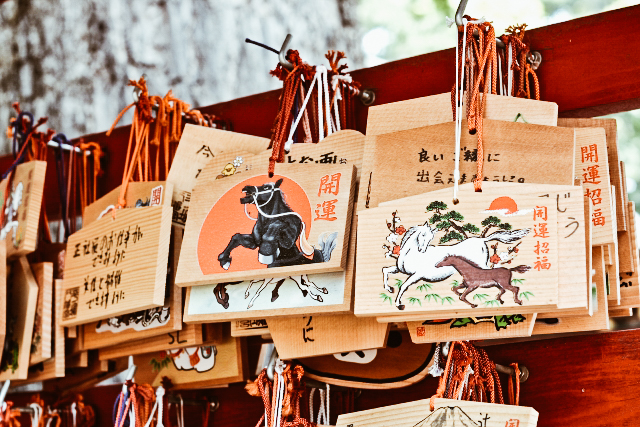
photo credits: shrine-temple-navi.jp
Ema as 'living objects'
.
The proof of this would come from the language itself. There are numerous ancient inscriptions on Ema that, from a linguistic point of view, unequivocally refer to the tablets as if they were talking about the horse itself. Let us look at some of them.
In the aforementioned Honchō Bunsui there is a reference to the Ema containing the symbol 匹 ("hiki", "biki" or "piki"). Reporting from the Reader, the expression would be: "色紙絵馬三匹 "or" 3 coloured sheets of horse pictures". Nowadays used as a counter for small animals, in Old Japanese the ideogram 匹 referred to stable animals, including horses. The combination of the word "ema" with this linguistic particle, whose function is to designate a living being, speaks volumes. Similar inscriptions have also been found in two shrines in Yamagata and Saitama, dating back to the 16th and 17th centuries. In this case, we find the ideogram 疋 instead of 匹, but the meaning and reading are the same. Again from Reader, it is: "shinme ippiki" (神馬一疋) and "ema ippiki" " 絵馬一疋 ". That is, "a sacred horse" and "an image of a horse".
However, although the hypothesis on the possible Buddhist origin of the tablets was not solid, Buddhism at least in retrospect is certainly present, given the Japanese syncretism. Among other things, in the temples, the Ema serve as a means of transmitting Buddhist religious doctrine, thus assuming a further function beyond that for which they were born. We are talking about those teachings about the importance of altruism or compassion (understood in Buddhism as 'empathy') or through images taken from stories about the Buddha. Although not entirely certain, it is estimated that the adoption of tablets by Buddhist temples began roughly between the 12th and 14th centuries (Kamakura period). Indeed, many of the Emaki - scroll artworks - of the period depict the Ema or horses themselves, both in Shinto shrines and Buddhist temples.
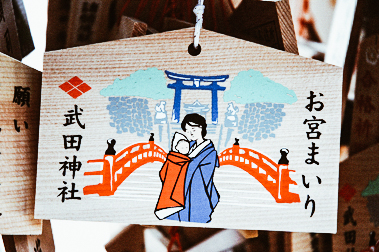

photo credits: japan-photo.de
Wooden tablets as an art form
.
Over the centuries, the designs of the Ema became more and more elaborate and varied, giving rise to a true folk art form. In particular, the Ō-ema (大絵馬), or "big ema", proved to be an important step in the development of Japanese art. In fact, after the birth of the Ō-ema, several great Japanese artists would draw on the ema style.
Created between the 14th and 16th centuries (Muromachi period), these Ema were at least one metre in height and width. They were donated to temples and shrines as a sign of gratitude - even after the fact, not only at the time of the request - and were placed in special spaces, the Ema-dō (絵馬堂). The oldest Ema-dō seems to have been sponsored by none other than... Toyotomi Hideyoshi in 1606, for the Kitano shrine in Kyoto. Also in Kyoto, the famous Kiyomizu-dera (清水寺) has several Ō-ema, originally donated by merchants as thanks for the safe return of their trading ships.
The consequence of this artistic development was the emergence of a "caste" of artists specialised in ema painting, which flourished in the Edo or Tokugawa period. This period - of economic expansion, especially at the beginning - led to an increase in the demand for professionals, enabling them to make a living from producing small ema paintings alone.

photo credits: japan-photo.de
The Ema language: symbolism
.
It was during this period that most of the symbols and themes reproduced on tablets originated. But to what does this need to put thoughts and feelings on paper - or rather, on wood - owe? This need is rooted in the folkloristic belief that a desire has a better chance of manifesting itself in reality if it is expressed in words, because by doing so, it gives it form. We must also bear in mind that in ancient times literacy was reserved for a small segment of the population. An alternative language to words, immediately comprehensible to all, was, therefore, necessary: this is the encounter between folklore and symbolism. Symbolic language thus proved to be the most effective way of doing this, through the depiction of specific problems or the desired 'grace'.
The representations could range from the well-being of children to health, fertility and even sexual desires. If, for example, a wish concerning childbirth, an Ema with a dog was the most appropriate choice. While the image of the white fox still indicates prosperity and abundance. For requests concerning health, the part of the body with the illness was also depicted. For those concerning fertility and sexuality, well: the depictions were unequivocal.

photo credits: himawari-japan.com
The type of representation can therefore be purely symbolic, drawn from tradition (see the example of the dog) or directly portray the physical object of interest (body parts). In any case, let us remember that such symbology, whether analogical or realistic, is accompanied by the thaumaturgical function of the various religious entities worshipped (spirits/gods/Buddhas). As we said at the beginning, 'protective deities' of a particular sphere of life (health, education and so on) are also a main iconic subject of the Ema. These are just examples, as subjects and styles can be as varied as people's requests and desires.
Ema language: forms and words
.
In the transition to the contemporary age, the traditional themes depicted have not changed much compared to ancient times. Of course there has been an addition of new subjects (see Thomas Edison or, why not, anime characters). However, we can observe an increase in the use of verbal language. We have already seen one reason for this: literacy. Literacy has thus added verbal language to symbolic language, allowing ordinary people to no longer depend solely on the former. So it is not uncommon nowadays to resort to linguistic games of homonymy and assonance to accompany the symbology of images.
Typical is the case of those Gokaku-ema (互角絵馬) - pentagonal tablets - with an 'educational' theme. They are designed for students, constantly seeking the support of the kami for success in their studies. Here, these Ema owe their shape to a pseudo-omonimy between the expression "gokaku" (互角) - pentagon - and "gōkaku" (合格) which indicates success in study. The subject of the Ema can therefore also be conveyed by the shape of the tablet itself! And, as you can see, it can sometimes make use of verbal meanings. A case of symbolism using verbal language is that of an Ema depicting an octopus, "tako" in Japanese (蛸) used to request help in eliminating corns. The term "callus" is spelled differently (胼胝) but is also pronounced "tako".
We can therefore see - to the delight of linguists and glottologists - that the ema language is made up of all these dimensions of communication. Symbols, shapes and words are thus integrated and intertwined in a single space. We should also remember that the graphic characters of the Japanese language derive from their ancestor pictograms, which directly represented visual objects!

photo credits: blog.livedoor.jp
Verbal language is very helpful in interpreting the meaning of a tablet's message. Because understanding the true meaning of symbolic language, needless to say, may not always be possible. Obviously, the use of verbal language does not guarantee 100% understanding, it depends on each case: there may be quite clear inscriptions, others more cryptic. The scholar Jennifer Robertson, who dealt with the Ema at the time of the Second World War, found a particular ambiguity in the tablets of this era. For this reason, she stresses the need to always take into account different possible interpretations.
Kogaeshi and Mabiki Ema, a special case
.
There is, however, a special type of Ema, where the message is neither a concern nor a need for something that is desired. A request, yes, but different from the others: a request for forgiveness. We are talking about all those plates that concern the delicate case of children, foetuses, aborted or stillborn: the so-called mizuko (水子). Ema concerning mizuko are called Kogaeshi (子がえし - lit. "sending back the baby"). Or even Mabiki (間引き - let's call it "reduction") which can refer to general infanticide.
In Buddhist temples specialising in mizuko (to which memorials are also dedicated), Kogaeshi Ema are hung in a special space, just for them, next to the statue of Jizō. In Buddhism, Jizō is a protective figure of the souls of children who died before their parents. According to belief, their spirits cannot cross the Sanzu - the river that separates earthly life from the "Other Side" - because they have not accumulated enough good deeds, due to premature death. They would therefore be condemned to pile up stones on the bank of the mystical river, but Jizō would protect them from demons and allow them to listen to mantras.
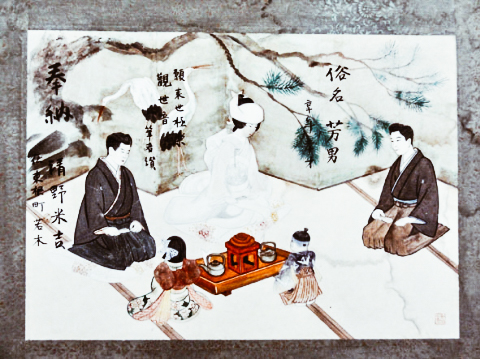
photo credits: hotoke-antiques.com
They differ from normal Ema, because their inscriptions are addressed to the spirit of the child, rather than to kami or buddha. Of course, they express all the anguish, sadness, regret of the mother or sometimes even both parents. The most common inscription, according to Reader, is a simple 'Gomen ne' (ごめんね) or 'I am sorry' ['Forgive me'] together with the reason for the gesture. This phenomenon was particularly striking at the turn of the late Edo and early Meiji periods, when extreme poverty and famine hit the Japanese population hard. The use of Mabiki Ema, however, has continued until contemporary times.
Mukasari Ema, another particular case
.
Another case of a death-related plaque is that of the Mukasari-ema (ムカサリ絵馬). In fact, these tablets were created for a singular purpose: to complete the CDs. Shirei Kekkon (死霊結婚), the marriages between dead souls. They belong to the category of large ema and, according to Robertson, their diffusion seems to be limited to Okinawa and the north-east of Japan, in the Yamagata Prefecture. "Mukasari' would in fact mean 'marriage' in the Yamagata dialect (not coincidentally written in the katakana alphabet). In essence, these Mukasari-ema allow to "simulate" in the representation of the plate, the marriage of a person who died single or unmarried. It is a way of allowing the soul to find peace, preventing it from becoming a tormented spirit.
For if that were to happen, the spirit might remain anchored in the earthly world, through grief, for not having been able to experience the joy of starting a family. Thus, haunting the world of the living. It is thus also a way for the family of the deceased person, however fictitious, to realise that dream. In modern times, one can also resort to photographs, if any, of the person in wedding attire while still alive. Such Mukasari-ema were particularly used at the time of the Second World War, for the reason easily imaginable.
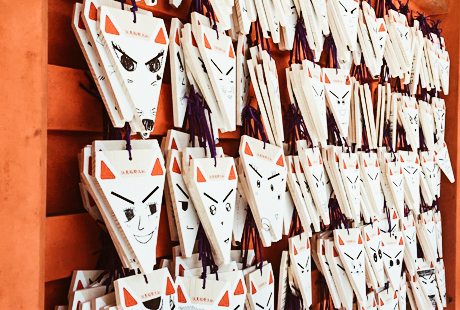
photo credits: journals.openedition.org
These are two borderline cases, the exception to the rule. Because, as is now clear, the Ema are made with an eye to human wellbeing, in the here and now, be it individual or extended to the whole of humanity. But they are still part of the Ema world and, if there is something that they have in common with the others, it is a significant function: the psychological function of releasing an inner burden. The very act of 'unloading' onto the tablets what one has inside - thoughts, desires, needs and concerns - is a profoundly cathartic act. Especially if those desires and needs run counter to the norms imposed by society. As Reader notes, a way for individuals to survive in situations beyond their normal control and the only way to survive, from social control.
People's desires
.
But in general, what specifically do people who have recourse to EMA want? We could identify two macro-areas: protection and success.
Health is certainly one of them, and it is a major theme at all times. As mentioned in the introduction, kami and buddha are associated with healing powers, attributed by extension also to shrines and temples dedicated to them. Requests for 'mercy' from illnesses and diseases - or for preventive protection from any danger - may concern the applicant himself, his family members, or other persons. Requests for success, which is a very popular area, may also concern the applicant or third parties, or a 'collective self' of which the applicant is a part. This is the case of all those requests made to propitiate the success of one's own company or institution of any other nature. There are Ema's for example where the requester is concerned with the success of their favourite team (baseball is very popular in Japan).
But there is one realm that stands out above them all: education. The contemporary Japanese education system is very rigid and competitive, and the pressure of failure on children can be particularly taxing, psychologically speaking. So, you want for that reason alone. Or even for inspiration - seeing friends or groups of peers go to religious centres to write their plaques - the fact remains that students represent a good chunk of the Ema's "clientele". In addition to asking for 'heaven's favour' in the success of tests and examinations, Ema registration can represent a moment of light-heartedness for the very young.
How could we not mention at this point the kami shinto Tenjin (天神), patron of culture and education, certainly popular among Japanese students. (Incidentally, Tenjin is the deification of a person who really existed between the 9th and 10th centuries AD! A Heian court scholar and politician, in life his real name was actually Sugawara no Michizane). His shrines are busiest in the cold months, especially January and early February, when the infamous "entrance exam hell" takes place.
There is no shortage of requests concerning material well-being as well as those concerning affairs of the heart. Even those to "sever ties" with the help of the special Enkiri-ema (縁切り) to express the desire to break the cord that binds to people, things (vices, addictions) or situations (diseases).
The incineration of the tablets
.
Yes, this is an important stage in the life of the tablets: the final one. Both Shinto shrines and Buddhist temples periodically burn the tablets offered for a dual purpose: ritual but also practical. (In Japanese religiosity, the practical and spiritual dimensions manage to marry serenely). The pragmatic motivation is simply... the need to make space! After all, hundreds and hundreds of tablets accumulate over time.
Spiritual motivation, on the other hand, is that through the ritual of the bonfire, people's wishes and requests can reach the realm of the kami and the buddha. Kami and Buddha who, I remind you, should have already read the Ema, always available in temples/sanctuaries, before the fire rituals. Once again Noragami comes to our aid, with its story so illustrative. It is not unusual to see the Tenjin himself wandering around in the sanctuaries dedicated to him, next to the Ema tablets. Noragami also touches on the theme of severing ties, which we spoke about earlier (in short, you get the hint: watch/read it).
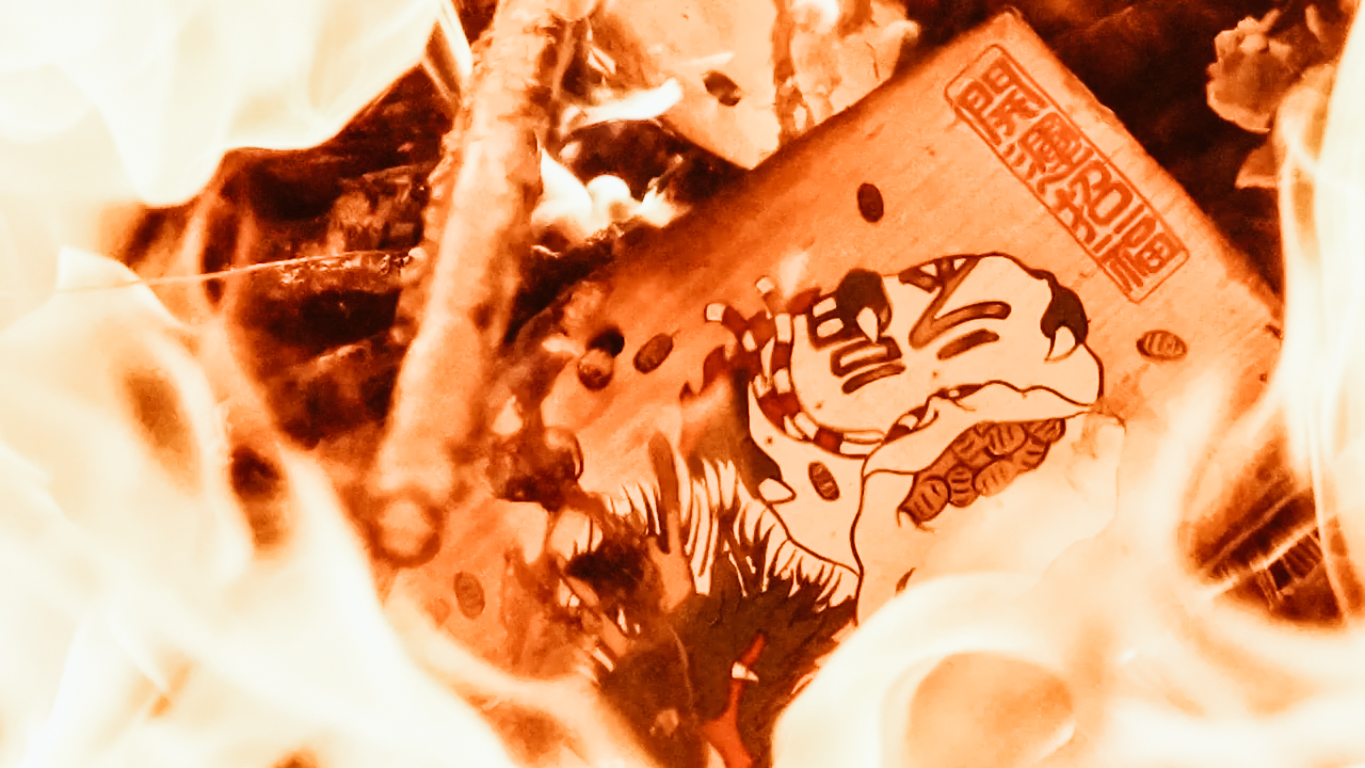
photo credits: https://youtu.be/Vn6AoThrXyc
When does this ritual take place?
The changeover to the new year is the moment that brings everyone together. However, it can also take place at other times, depending on each religious centre. Tenjin shrines, for example, usually do it at the end of October, just after the festivals dedicated to him.
The period around New Year's Eve, O-Shogatsu (お正月), is however ideal for everyone, being a time of transition. What better time to symbolically release what has now had its day, releasing the wishes and demands of the old year? And at the same time, what more propitious time to usher in the new year, perhaps by writing new ones? Boy, so many commissions for these kamis and buddhas from the very first sighs of the new year! The phrase "Getting rid of the old to make room for the new", in this context, can only fit well, lending itself more than perfectly to this dual interpretation.
Nothing rains from the sky!
.
But be careful not to misunderstand. Don't think that this is merely an act of superstition: nothing could be further from the truth! Resorting to the Ema is not the same as thinking of folding one's arms and waiting for an otherworldly grace. Those who resort to the EMA generally know, even with a hypothetical "favour from heaven", that 95% of the chances of success are given by their own commitment. And one's own mental attitude. I refer, of course, to all situations where one has power of action. In cases where this is not possible, the only thing to do is to try to act, as much as you can, on your mental attitude.
Ema tablets testify to the search for change or safety from some risk or danger. They have the power to approach even the most "secular", those who perhaps do not lead a great spiritual life. This may be the case for many young people, or for children, who may see in the tablets a playful side, as well as a support for their studies. The meaning of offering an Ema tablet is basically to cope with a crisis, of whatever nature, by resorting to the supernatural dimension, which has always been a source of support. In other words, the Ema performs a function of comfort and support. And, by extension, an important therapeutic function.
Contemporary Japanese artists abroad
Japan, like Italy, is a country very attached to art and many contemporary Japanese artists have exported their works abroad.
Contemporary Japanese artists abroad
Author: Sara
Museums, art fairs and expositions have allowed the Japanese contemporary art world to look outwards. At last, even great artists are going out beyond the borders of the Rising Sun. We at Japan Italy Bridge have decided to introduce you to some of the most important contemporary artists who have received worldwide acclaim. We are talking about creatives like Yayoi Kusama, Tatsuo Miyajima, Takashi Murakami, Yoshitomo Nara and Hiroshi Sugimoto. Are you ready for this trip?
Yayoi Kusama

photo credits: wsj.com
Born in Nagano in 1929, Yayoi Kusama is perhaps the best known among Japanese contemporary artists. She began to show her immense artistic talents at the age of 10. The difficult relationship with her mother and trauma that deeply affected her led Kusama to paint her experiences on the canvas. The physical environment and her personality vanished swallowed up by the space that moved at an incredible speed. She also began to draw inspiration from Georgia O'Keeffe and wrote a letter to her. The artist replied and Kusama moved to New York where he began making monochrome paintings that immediately attracted attention.
The early 1960s were certainly not easy for a woman, especially a Japanese woman, and being able to exhibit in galleries was a difficult undertaking. However, she did succeed and became increasingly well known in the field of conceptual art. Her works include attributes of feminism, minimalism, surrealism, surrealism, art brut, pop art and abstract expressionism, all united by the polka dot technique.
Back in Japan, the artist was able to enjoy the success she deserved. Her works were exhibited at the Museum of Modern Art in New York, the Tate Modern in London and the National Museum of Modern Art in Tokyo. Between 1994 and 2012, Kusama collaborated with the musician Peter Gabriel and especially with Marc Jacobs, artistic director of Louis Vuitton. Kusama now lives in the Seiwa Psychiatric Hospital in Japan by personal choice and continues to paint daily in his studio in Shinjuku.
Tatsuo Miyajima
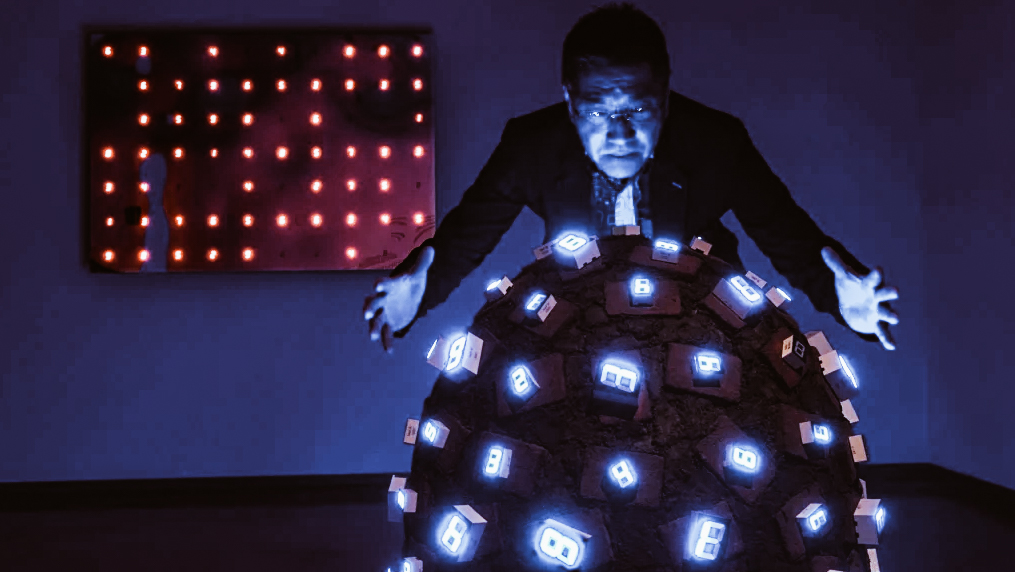
photo credits: smh.com.au
Born in Tokyo in 1957, Tatsuo Miyajima graduated from the oil painting course at the Fine Arts Department of Tokyo National University of Fine Arts and Music. He began experimenting with performance art before moving on to light-based installations.
Miyajima stated that the desire to create more lasting work, in contrast to the necessarily ephemeral nature of his performance and actions, motivated him to start working on sculptures and installations. Using contemporary materials such as electrical circuits, video and computers, Miyajima's highly technological work focused on the use of digital light-emitting diode (LED) counters. These numbers, flashing in continuous and repetitive cycles from 1 to 9, represent the journey from life to death, whose purpose is symbolised by the "0", a number that never appears in her work.
Miyajima has had solo exhibitions at the Ullens Center for Contemporary Art in Beijing, the Miyanomori Art Museum in Hokkaido, and the San Francisco Museum of Modern Art. She has also taken part in the Venice Biennale and numerous group exhibitions, from the Museum of Contemporary Art in Sydney to the Hiroshima City Museum of Contemporary Art. Since 2006 Miyajima has been Vice President of the Tohoku University of Art and Design.
Takashi Murakami
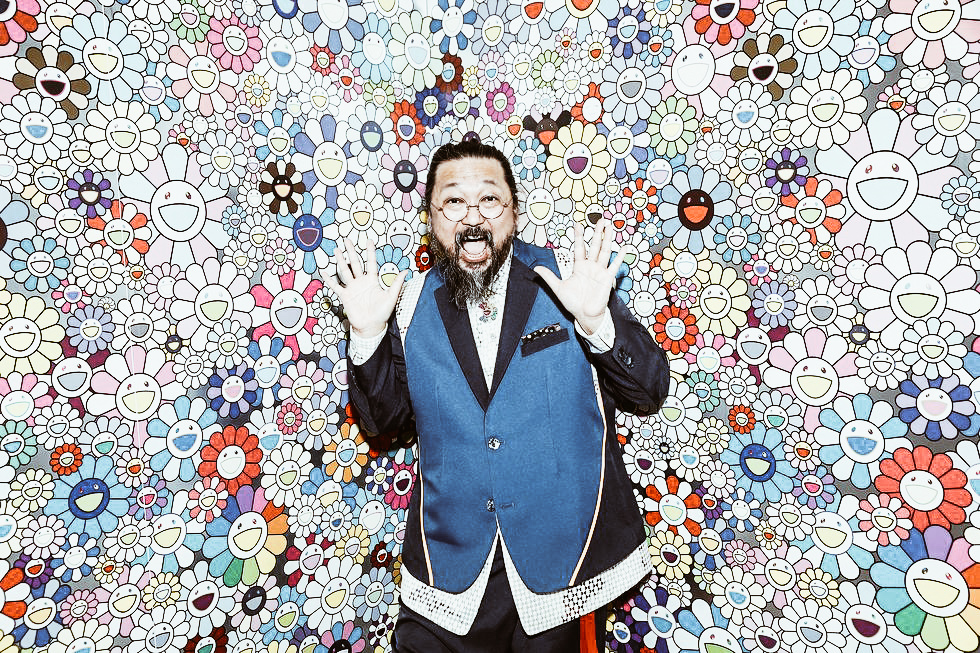
photo credits: crfashionbook.com
Born in Tokyo in 1962, Takashi Murakami began his studies of traditional Japanese painting at Tokyo Geijutsu Daigaku. However, his aspiration was to become a great mangaka. After graduating with a degree in traditional Nihon-ga painting, he won a MoMA PS1 scholarship. He moved to New York enriching his influences with the works of Andy Warhol and drawing inspiration from the production philosophies of film companies such as Disney, LucasFilm and Hayao Miyazaki's Ghibli Studio.
Among the various solo exhibitions, there is one that will mark the birth of a new Japanese art movement: "Superflat". This was the title of the exhibition at MOCA in Los Angeles which became the artist's programmatic and aesthetic manifesto systematically promoting the value of Japanese art independent of Western influences. An art capable of expressing the cultural reality of the new Japan. Superflat in fact mixes otaku elements with Kabuki and jōruri elements, fused and flattened into images with smooth surfaces and brilliant colours in which the aesthetic themes are amplified and exalted.
Murakami collaborated with Marc Jacobs and created the limited-edition Cherry Blossom bag for Louis Vuitton, designing for the occasion a kawaii pattern with the monogram of the fashion company.
Thanks to his aesthetic and entrepreneurial approach to art, Murakami has fully entered the international elite art scene, selling through third party companies, objects destined for the mass market, inventing and promoting the Kaikai Kiki and GEISAI brands.
Yoshitomo Nara

photo credits: scmp.com
Born in Hirosaki in 1959, Yoshitomo Nara studied at the Prefectural University of Fine Arts and Music in Aichi and at the Kunstakademie in Düsseldorf.
Nara is known for his paintings whose subjects are deceptively simple. We find children and animals in pastel colours with cartoon-like features with little or no background that appear both sweet and sinister. They also sometimes wield weapons such as knives and saws and their looks are accusatory. His art is a metaphor that accuses people of attacking the innocence of childhood.
Nara's objective perversions are rooted in Japanese popular culture, but these influences are mixed with those of Eastern and Western society. Her paintings, sculptures, installations and engravings explore the themes of isolation, rebellion, spirituality and religion.
Hiroshi Sugimoto
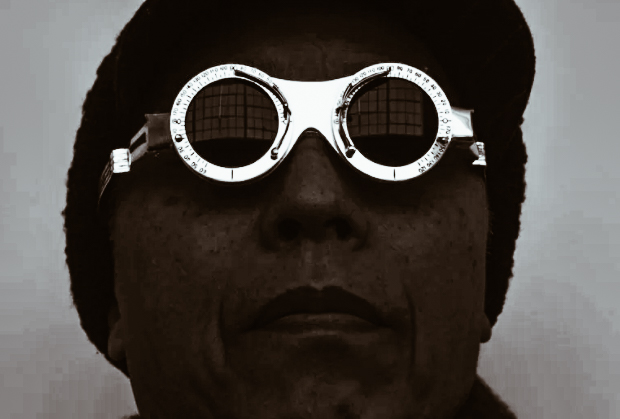
photo credits: artslife.com
Born in 1948 in Tokyo, Hiroshi Sugimoto, after obtaining his Bachelor of Arts degree, moved to Los Angeles to study photography. These studies led him, in the 1970s, to establish himself as one of the most famous contemporary photographers.
His work deals with history and temporal existence, investigating themes such as time, empiricism and metaphysics. Sugimoto has received numerous grants and his works are exhibited in the collections of the Tate Gallery, the Museum of Contemporary Art, Chicago, the Metropolitan Museum in New York and the Guggenheim in New York.
Like many contemporary artists, Sugimoto has collaborated with fashion, this time with the French company Hermès. Sugimoto's colour photos for Hermes' foulards were exhibited in June 2012 at the Museum of Cultures in Basel. During the 2014 Venice Biennale, Sugimoto unveiled his "Glass Tea House Mondiran" at Le Stanze del Vetro on the island of San Giorgio Maggiore.
The art world is full of facets given by continuous inspirations, by the search for the ego, by the need to express profound concepts without the use of words. Which of the contemporary Japanese artists have impressed you the most? Let us know in the comments!
Hiroshima, a prefecture waiting to be discovered
Japan Italy Bridge promotes Japan and creates a real bridge between Japan and Italy and today we focus on Hiroshima. The Japan National Tourism Organization promotes tourism and this month focuses on Hiroshima prefecture. Let's give a more in-depth look.
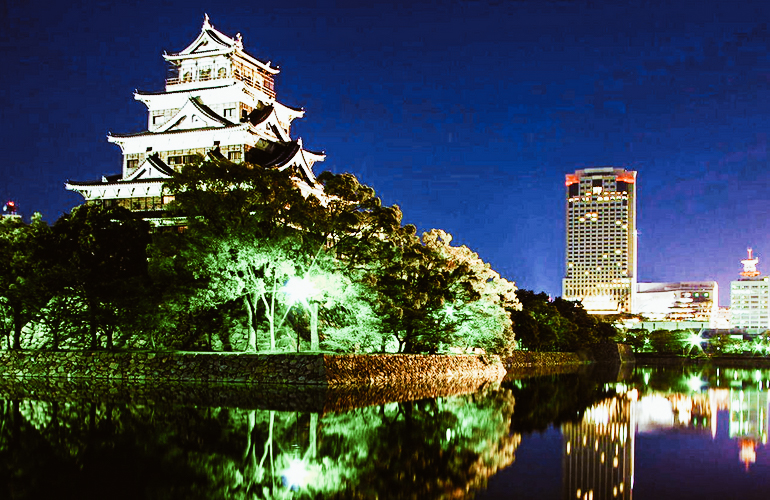
Hiroshima, a prefecture waiting to be discovered
Author: SaiKaiAngel
History

photo credits: un.org
The city of Hiroshima was founded in 1589, during the feudal period Sengoku by the Japanese daimyō Mōri Terumoto who made it the capital of his feud. After the battle of Sekigahara for territorial possessions, Terumoto had to surrender Hiroshima to the winner Tokugawa Ieyasu, who decided to have it administered by the daimyō Fukushima Masanori.
In 1871 the city became the capital of the homonymous prefecture and an important commercial and naval centre of Japan. At the end of the 19th century, Hiroshima witnessed further industrialization, which culminated with the war facilities erected during the Russian -Japanese war of 1904, and became Mazda's headquarters in 1920. In 1938 it became part of the broader war scenario of the Second World War. Unfortunately, on August 6, 1945, at 8:16 and 8 seconds, the bomb called Little Boy exploded at 576 meters, with a power equal to 12,500 tons of TNT. The nuclear explosion killed about 260,000 people and injured more than 160,000 in the months immediately following due to radiation.
The Territory
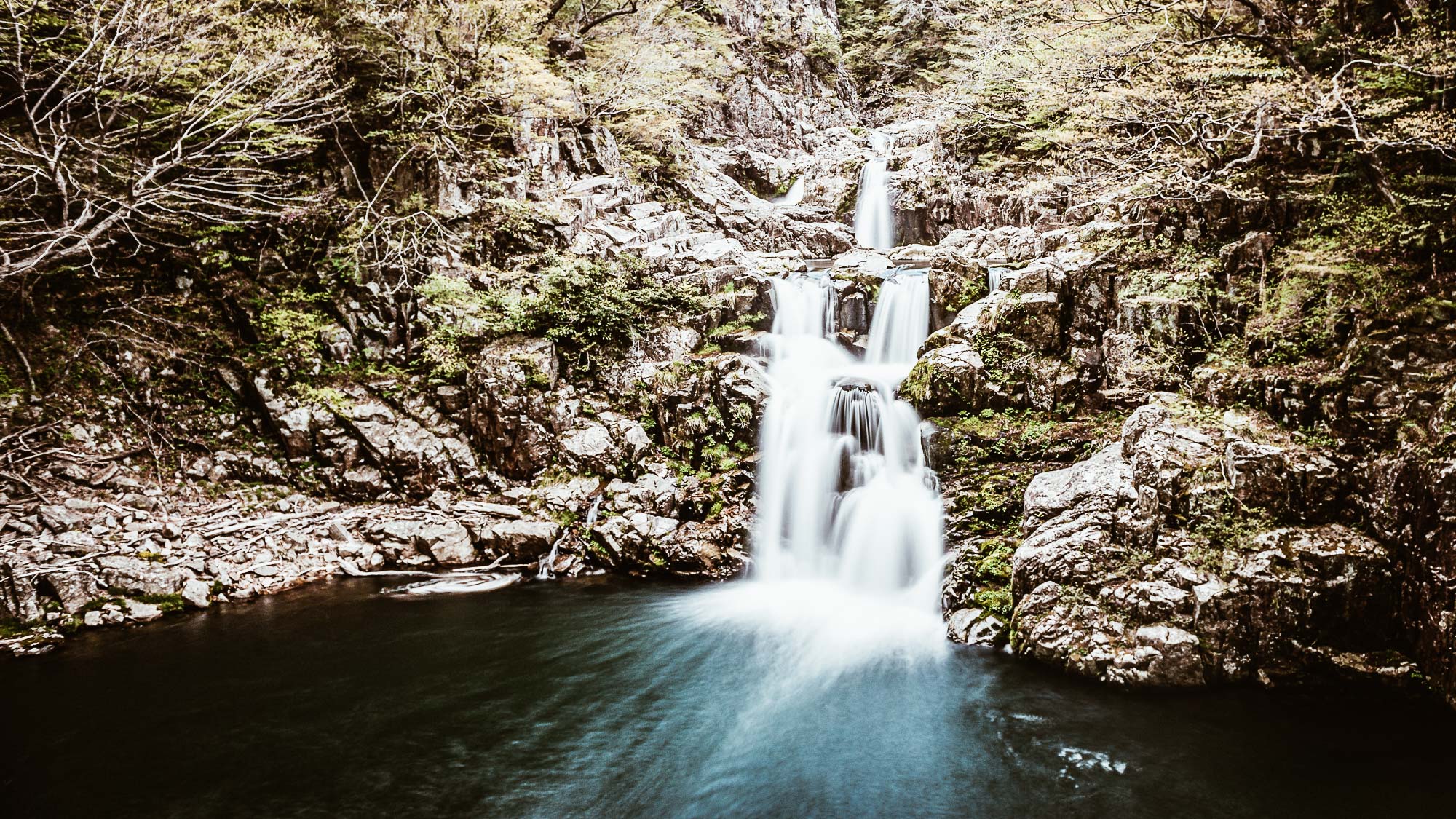
photo credits: locationscout.net
The centre lies on the harbour bay towards the sea of Aki-nada and the territory is hilly. Hiroshima has many islands such as Etajima-Nomi and Itsukushima and, inland, the territory becomes rockier with the Gosasou and Shiraki mountains as a road to the Ota River.
As JNTO also explains and assures, you can explore Japan in absolute safety! Visit Hiroshima without fear and in complete peace of mind, you will always be guaranteed the right distance, temperature detection in shops and places of interest, protection such as the mask. Do not risk anything, as the first interest of the person and the tourist there is always safety in every place.
Take advantage to visit this beautiful prefecture that gives us not only great emotions but also enchanting places that you will remember forever. Despite the tragedy caused by the explosion of the atomic bomb, Hiroshima had doubled its pre-war population in 1974 and was considered the "peace capital" of the world. Hiroshima is home to important attractions to visit absolutely, let's see them in detail.
Hiroshima Peace Memorial Park
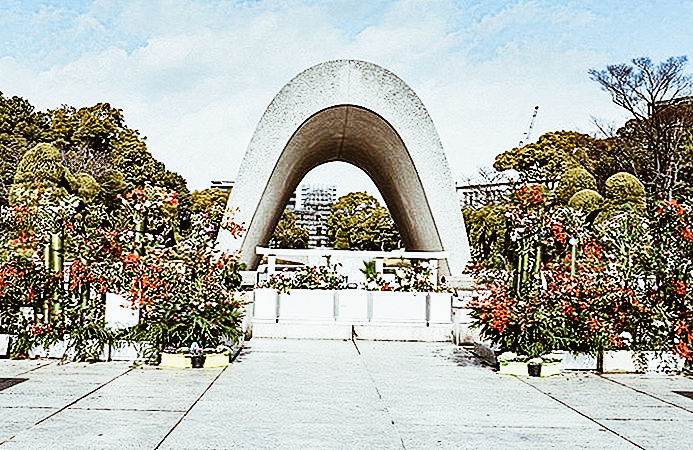
photo credits: theplanetsworld.com
Symbol of the need for eternal peace, it commemorates the numerous victims of the first nuclear attack and is located right in the epicentre of the explosion. Hiroshima Peace Memorial Park boasts many important monuments, museums related to the events of that day and its consequences. In addition to the beautiful gardens with their cherry blossoms, we find the Peace Memorial Museum, the Memorial Cenotaph, the Flame of Peace, and the Atom Bomb Dome with the ruins of the old Chamber of Industry and Commerce. A very interesting place is the Children's Peace Monument and the Monument to the victims of the Atom Bomb.
Shukkei-en Garden
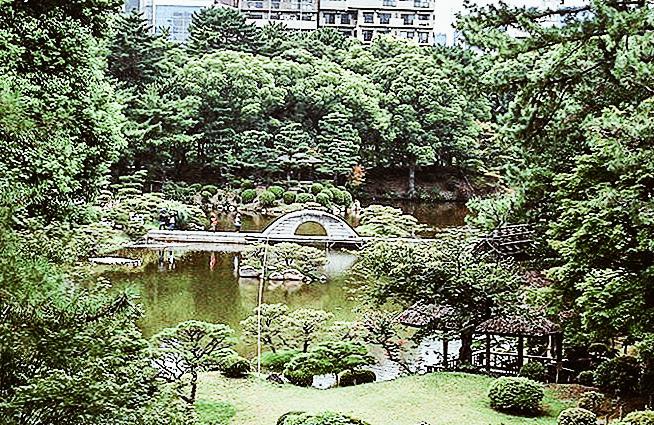
photo credits: theplanetsworld.com
The Shukkei-en Garden is a wonderful garden on the banks of the river Ōta. A space of peace and quiet desired by Asano Nagaakira in 1620. This garden was once the home of Emperor Meiji, and after the damage caused by the explosion in 1945, they literally flourished again in 1951 in all their beauty. The gardens opened to the public after being donated to the city in 1940 and, despite the heavy damage caused by the 1945 nuclear attack, the gardens reopened in all their former glory in 1951. Bridges, paths, a true landscape of calm and relaxation pampered by the sound of streams that draw from the river Ōta.
Hiroshima Peace Memorial Museum
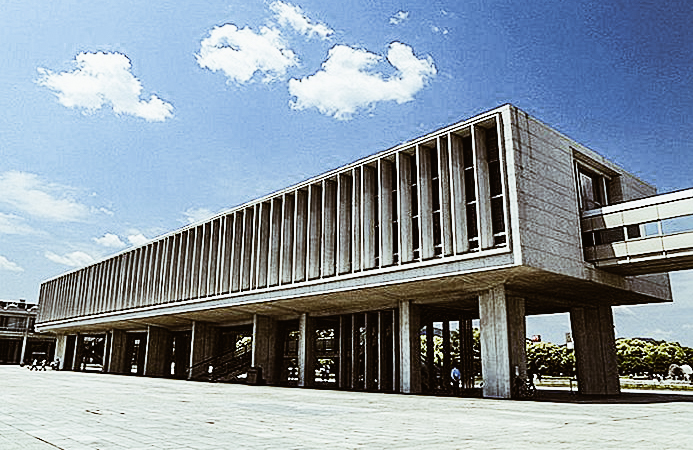
photo credits: theplanetsworld.com
The exhibitions focused on the explosion of the atomic bomb of the Peace Memorial Museum are very hard and very painful and are exhibited together with exhibitions that extol world peace. This museum is one of the sites that cannot be missed during your trip to Japan, both to experience the rebirth of a prefecture and to pay homage to those who lost their lives during the terrible bombing.
Hiroshima Castle

photo credits: theplanetsworld.com
The Castle of Hiroshima (Rijō), also known as Carp Castle, was the residence of Fukushima Masanori and then passed into the possession of the famous Asano Nagaakira in 1619. In the castle and in particular, in the tower, there is a museum about the history of the castle with images of Hiroshima. In the castle, we can also find three trees that survived the atomic bomb and a bunker used for radio transmissions after the explosion.
Itsukushima island sanctuary
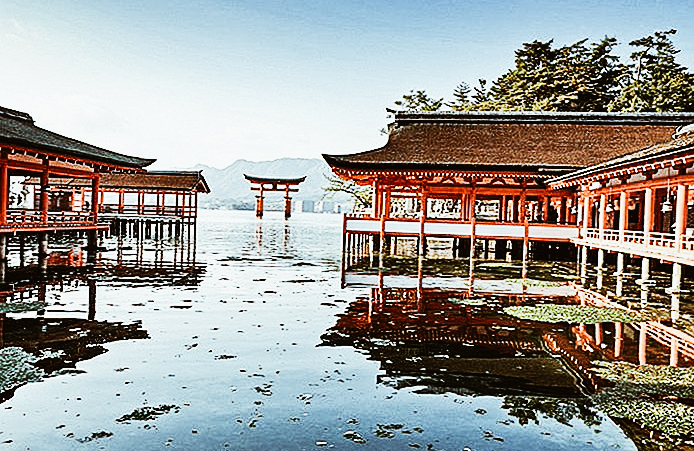
photo credits: theplanetsworld.com
Miyajima, the Sanctuary Island, is famous for the sanctuary of Itsukushima, dedicated to the princesses Ichikishimahime, Tagorihime and Tagitsu-hime, daughters of the wind god Susanoo. The buildings with the high tide, seem to float magically on the water because they are located on a bay supported by stilts. The show is not to be missed, a feast of colours, red wooden structures and white walls. Honden (Main Hall), Heiden (the offering hall). Haiden (the prayer hall), Senjokaku (the Hall of a Thousand Carpets) and Takabutai used for the Bugaku and Kagura dances are the places you cannot miss during your visit to Hiroshima.
Memorial Cathedral for World Peace
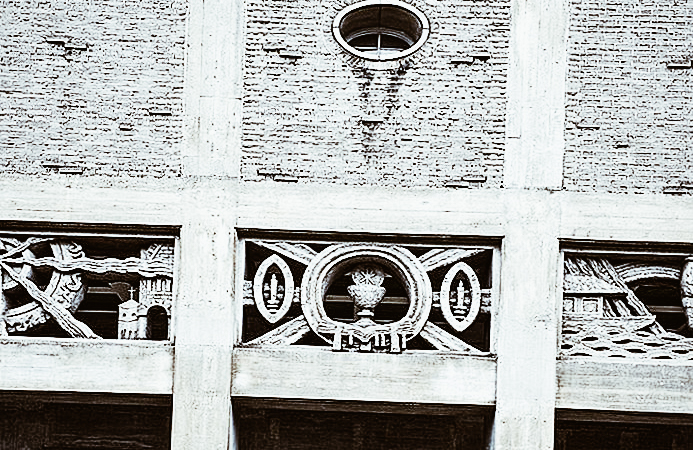
photo credits: theplanetsworld.com
The Memorial Cathedral is one of the largest churches in Asia, built in 1954 by German Jesuit priest Hugo Lassalle from a design by Japanese architect Murano Tohgo. The Memorial Cathedral has four bells in the 46-meter tower, an organ provided by the city of Cologne and the bronze doors of Düsseldorf.
The Mitaki-dera temple

photo credits: theplanetsworld.com
One of the most beautiful temples in Hiroshima is Mitaki-dera. Built in 809 and rebuilt after the war, it is also famous for its beautiful gardens, which in autumn give a fiery red show to visitors. Also known as the Temple of the Three Falls for its location at the foot of Mount Mitaki, the temple is famous for its red lacquer pagoda, Tahoto and waterfalls.
Fudoin Temple

photo credits: japanvisitor.com
Another beautiful place to visit is the Temple of Fudoin, the architecture of the Muromachi period between the 14th and 16th century with a large main hall containing a carved statue designated as a national treasure.
Hiroshima museums
The city of Hiroshima and the whole prefecture are also famous for the many museums in the area. Below are the ones that we believe are unmissable on your trip to Hiroshima.
Hiroshima Prefectural Art Museum (Hiroshima Kenritsu Bijutsukan)
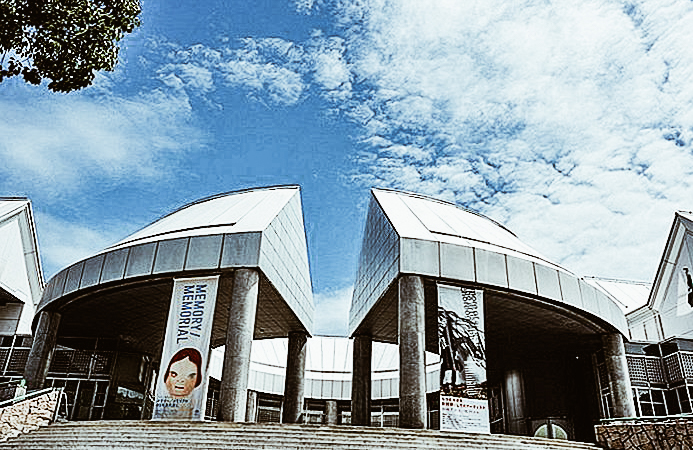
photo credits: theplanetsworld.com
This Museum, opened in 1968, focuses on local artists with collections related to the atomic bombardment and a children's gallery.
Hiroshima Museum of Art
The Hiroshima Museum of Art consists of eight world-class art galleries. We can find the collection of paintings by European masters such as Monet, Renoir, Degas, Maillol and Picasso together with leading Japanese artists such as Ryohei Koiso and Yuzo Saeki.
Hiroshima City Asa Zoological Park
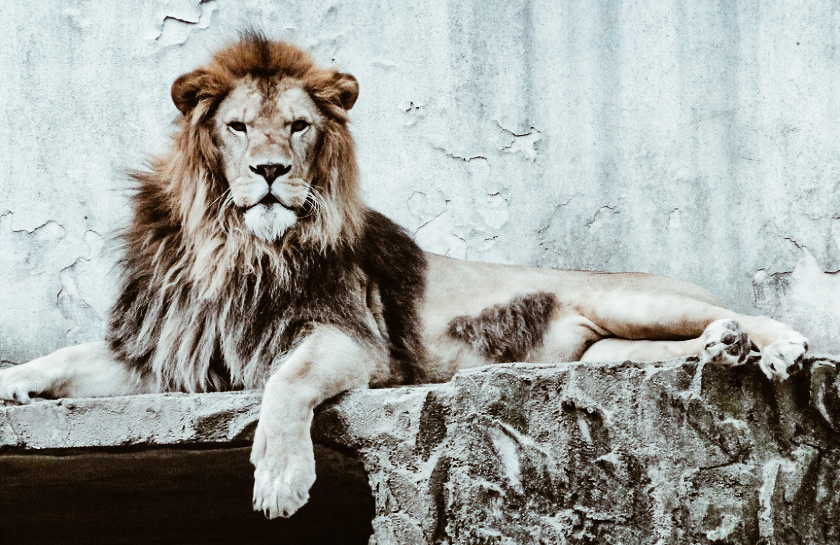
photo credits: japantravel.com
Opened in 1971, the Asa Zoological Park is about 124 hectares large and is home to 170 species of animals, like minor pandas, Japanese giant salamanders, lions, giraffes and rhinos. A place to distract yourself from the other important places in Hiroshima and to entertain the mind, not only for children but also for adults!
Food and beverage
Obviously, with such an interesting trip, we can't forget to eat and drink and that's why Hiroshima gives us unique experiences here too! Not to be forgotten are five famous Sakaguras from Hiroshima thanks to which we can enjoy exceptional sake. Read carefully here for a unique experience in the Japanese tradition.
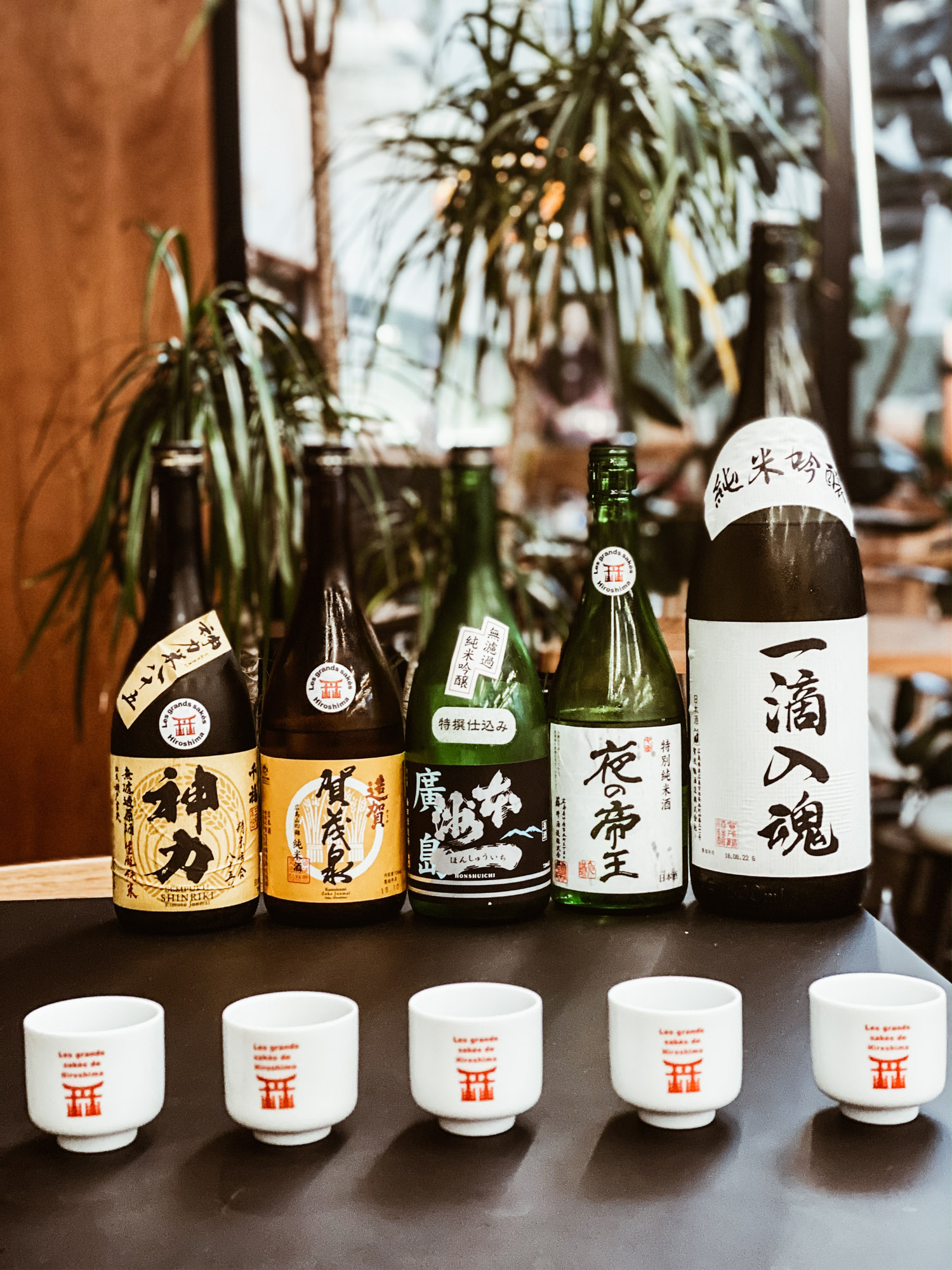
Honshu ichi - Brasserie UmedaCo., Ltd.
Category】Junmai Ginjo
【Ingredients】Rice, Koji rice (Senbon Nishiki / Hiroshima product)
【Polishing ratio】60%
【Alcohol content】 16.8 °
【Glucose density】 1.8
【Acidity】1.7
【Sake Gradation】 +5
【Aroma】Sweet fruity aroma
【Pairing】Fish in general, chicken, sweets with strong flavour such as cheesecake
【Features】
A Junmai Ginjo Sake produced by Hiroshima Prefecture, preparing "Senbon Nishiki" rice with Hiroshima Ginjo yeast. It is characterized by the fruity aroma of Ginjo sake, slightly sweet taste. It can be enjoyed with fish and cheese dishes.
‘Zoka’ - Kamoizumi Shuzo Co., Ltd. 創業 1912年 founded in 1912
【Category】Junmai
【Ingredients】Rice, Koji, Water (Rice: Yamadanishiki/100% Higashiroshima )
【Polishing ratio】65%
【Alcohol content】16°
【Glucose density】2.0%
【Acidity】1.8
【Sake Gradation】±0
【Aroma】Sweet chestnut, with a strong smell of rice and wheat.
【Pairing】Boiled tofu, sweet with citrus fruits, marinated food.
【Features】
Junmai Daiginjo is made from "Yamada Nishiki" sake rice grown in a field located about 6 km north of the brewery, using Saijo underground water and the Hiroshima Mori technique. The delicate aroma and sweetness of the transparent and gentle rice harmonize perfectly with the fresh acidity. You can enjoy it cooled with a thin cup or glass of wine. Sake certified with Saijo JAPAN brand)
Itteki Nyukon - KamotsuruCo., Ltd.
【Category】Junmai Ginjoshu
【Ingredients】Rice, Koji rice(100% Hiroshima rice)
【Polishing ratio】60%
【Alcohol Gradation】15 - 16 °
【Glucose density】1.0
【Acidity】1.6
【Sake Gradation】+3
【Sweet】Aroma
【Pairing】Sauté of chicken, Gelée of white peaches
【Features】
This sake has as first material the rice suitable for its preparation. A slightly dry Junmai Ginjo sake that goes well with foods with the right acidity, good both cold and hot.
Sempuku Shinriki 【Nickname】Filled with happiness - Brasserie MiyakeCo., Ltd. Sempuku Shinriki
【Category】Saké Daiginjo
【Ingredients】Rice, Koji (Shinriki) rice
【Polishing ratio】 85%
【Alcohol content】 19.0 °
【Glucose density】 1.2
【Acidity】2.3
【Sake Gradation】 +5
【Aroma】Mature aroma, almond
【Pairing】Sukiyaki, Steak, Cheese, Chocolate
【Features】
Kamiriki rice, which is the origin of Chifuku, is 85% processed and is close to the processing speed of rice from the Meiji and Taisho eras. A bottle full of feelings for the preparation of sake, especially suitable for people who particularly care about Japanese sake.
Night Emperor - Fuji Shuzo
【Category】Junmai
【Ingredients】Rice, Hattan Nishiki Koji, Water
【Polishing ratio】65%
【Alcohol content】 15 °
【Glucose density】N/A
【Acidity】1.6
【Aroma】Moscato, walnuts
【Sake Gradation】 +9
【Pairing】Tartare, Lemon Grilled Chicken
【Features】
Night Emperor is a mixed Hachitan Nishiki based liqueur produced in Hiroshima Prefecture. This versatile liqueur is easy to combine with any dish. Soft taste that takes advantage of the characteristics of fresh water preparation and keeps the alcohol content low while maintaining the taste of koji and rice. Good tasted both cold and hot.
We have given you some examples and information that will surely push you to live the Hiroshima experience, but there is even more! Hiroshima prefecture is a treasure chest full of treasures just waiting to be explored by you! What are you waiting for? We at Japan Italy Bridge do not make us repeat it twice, it will be a joy both for the eyes and for the palate and the heart and soul. We will all come out of it enriched!









